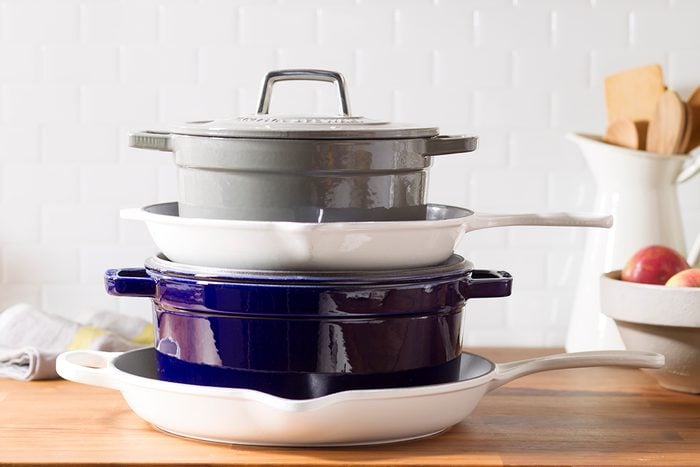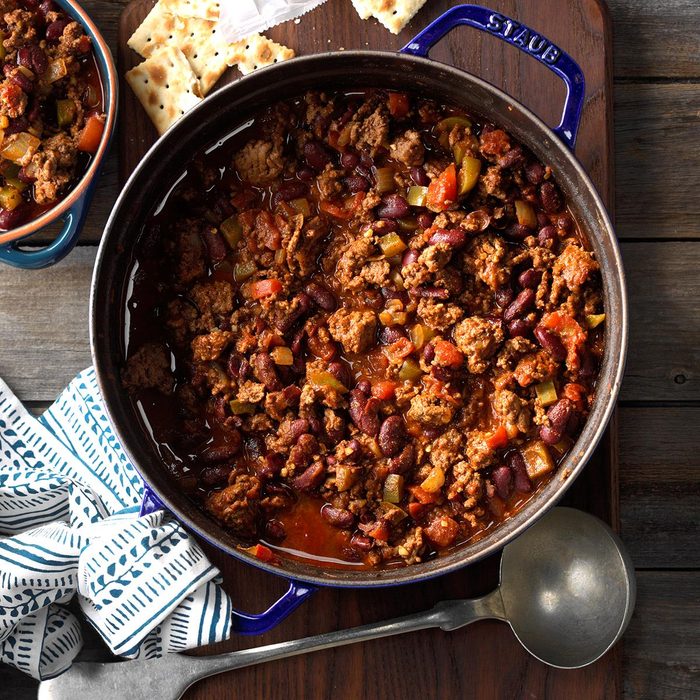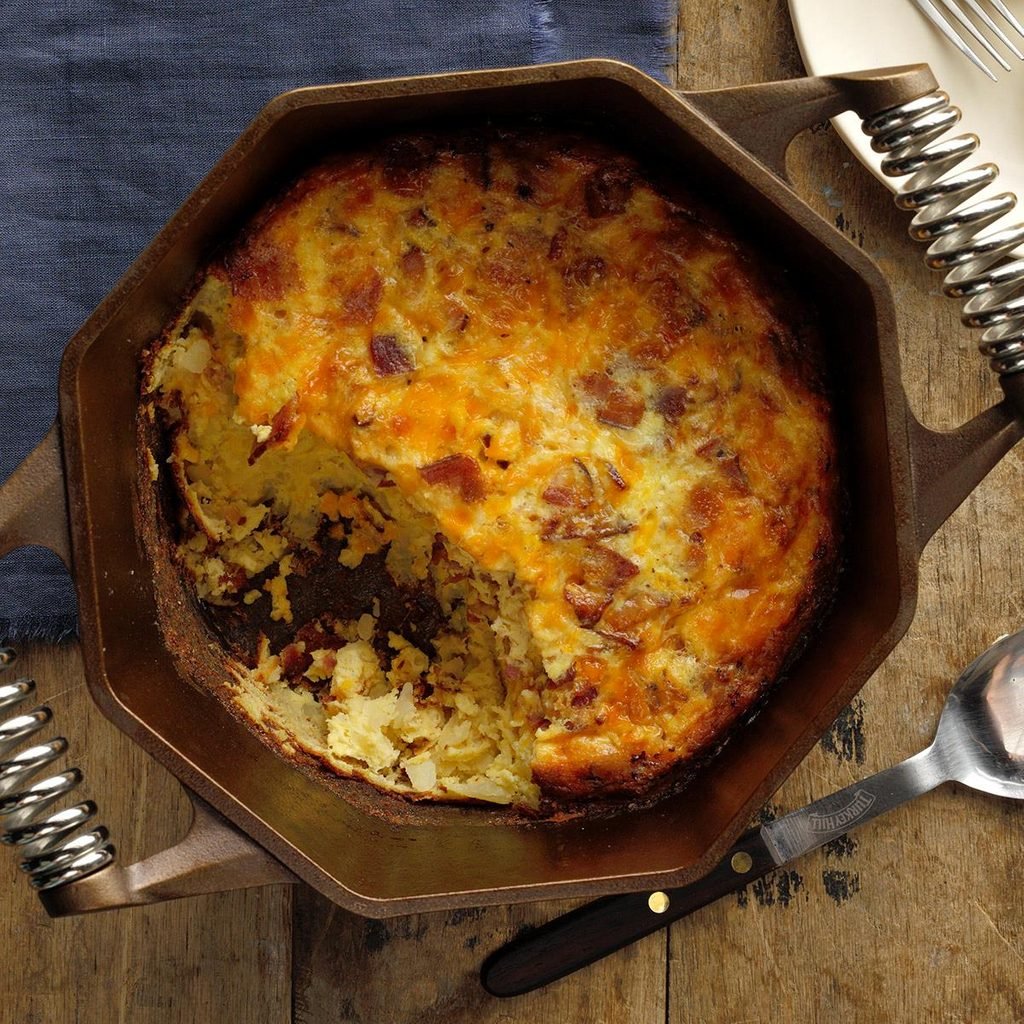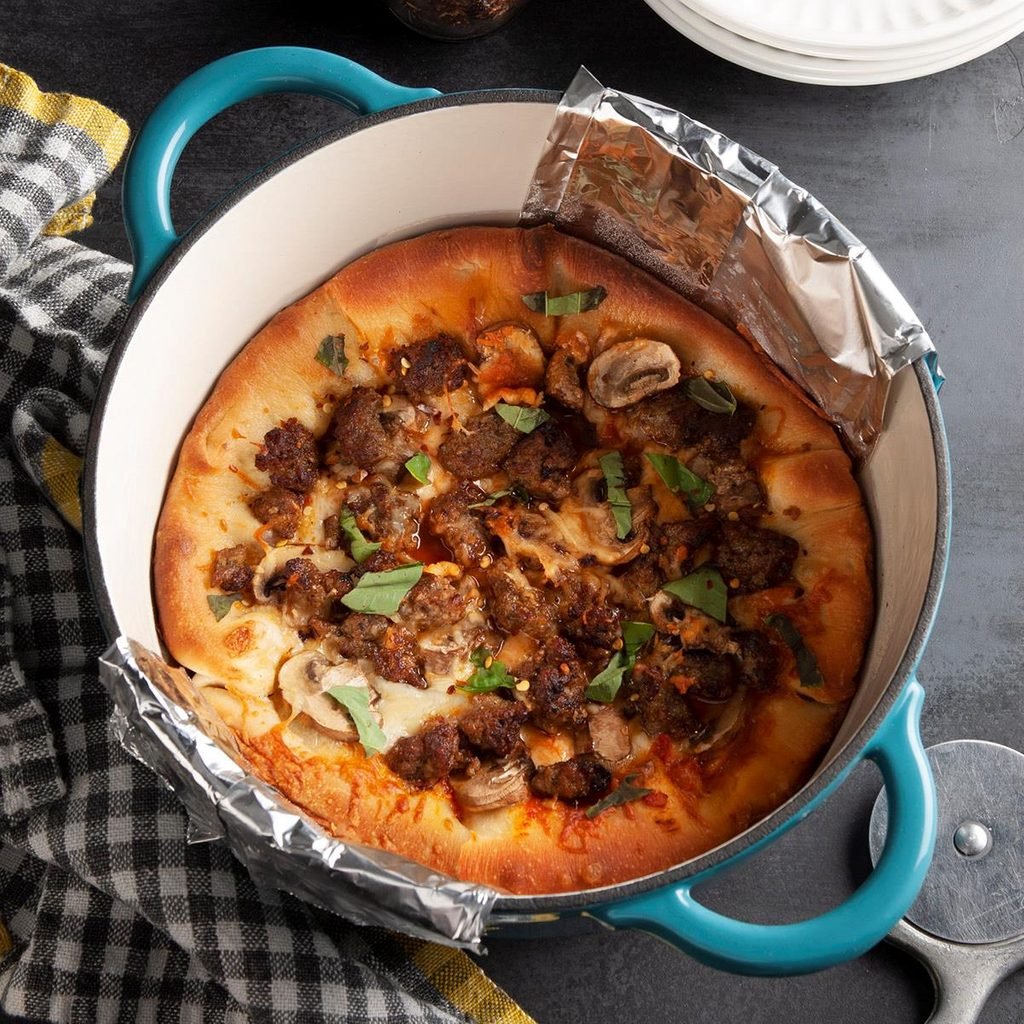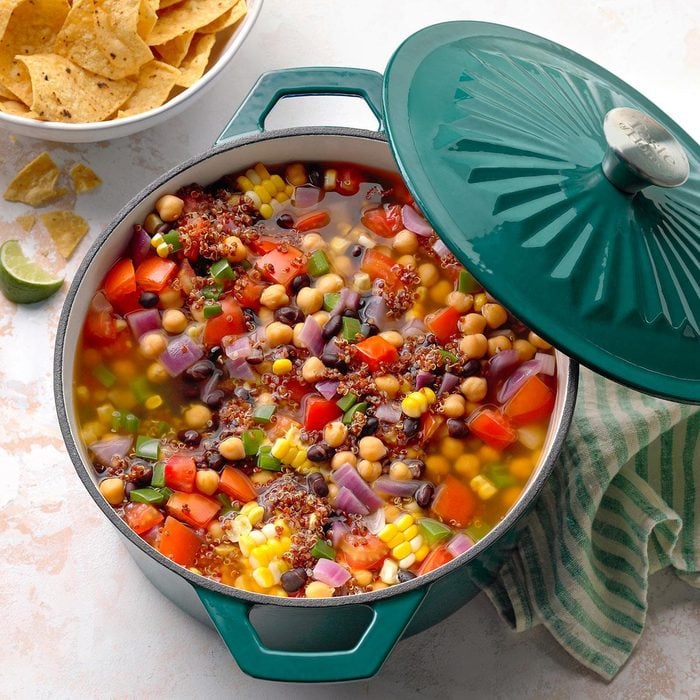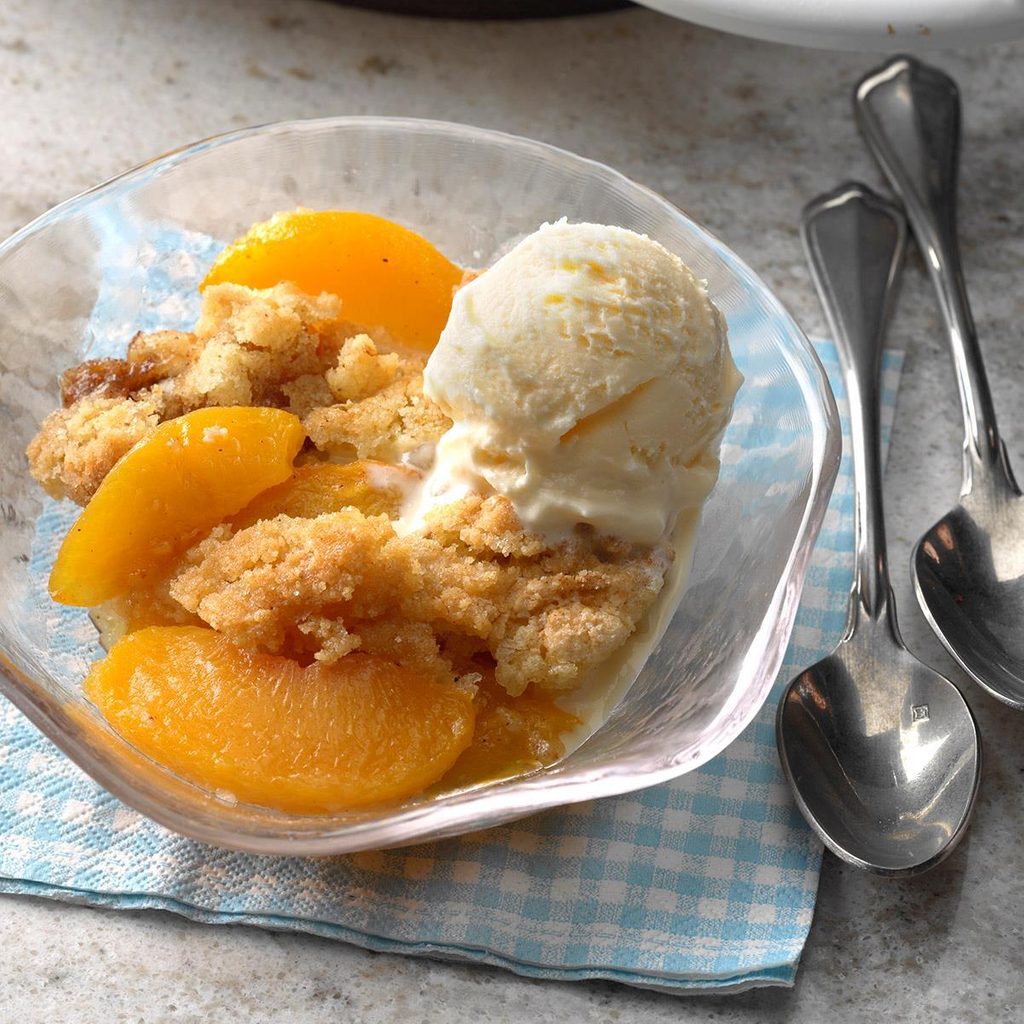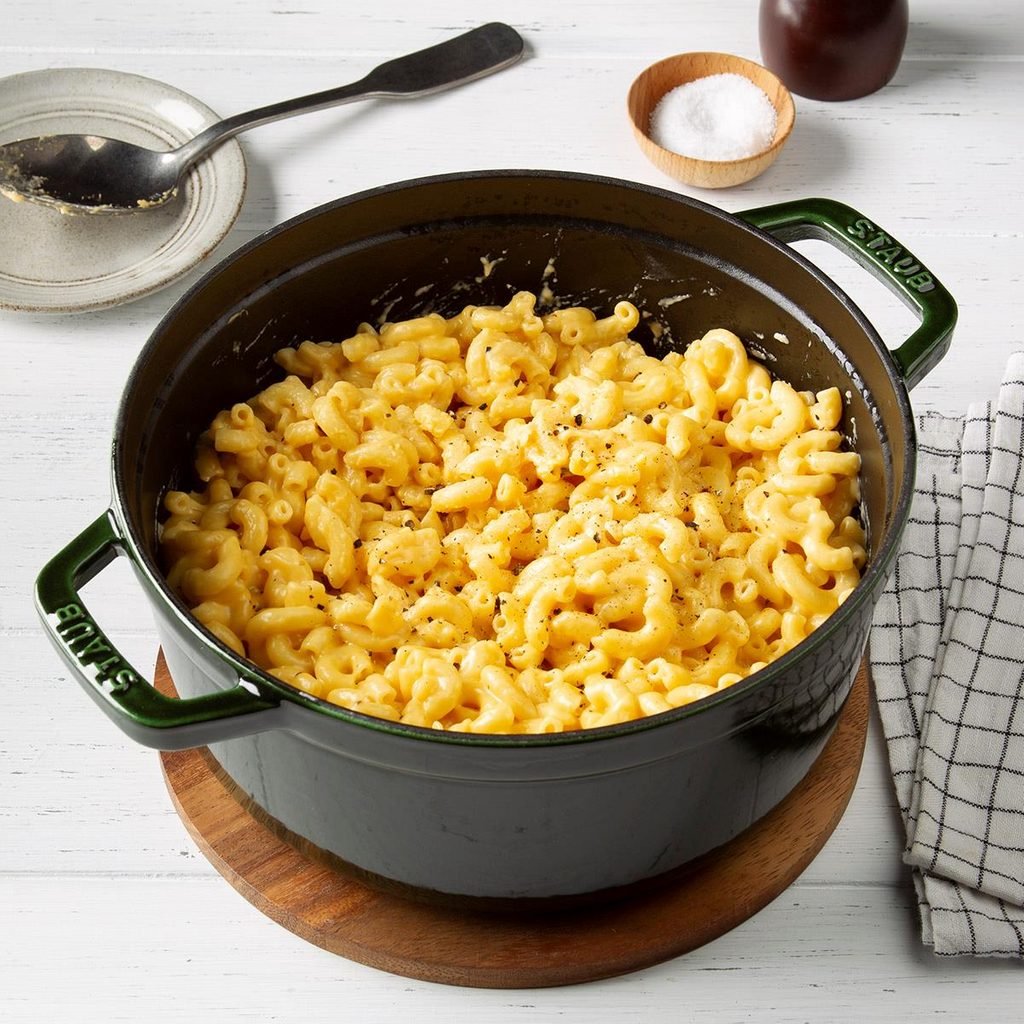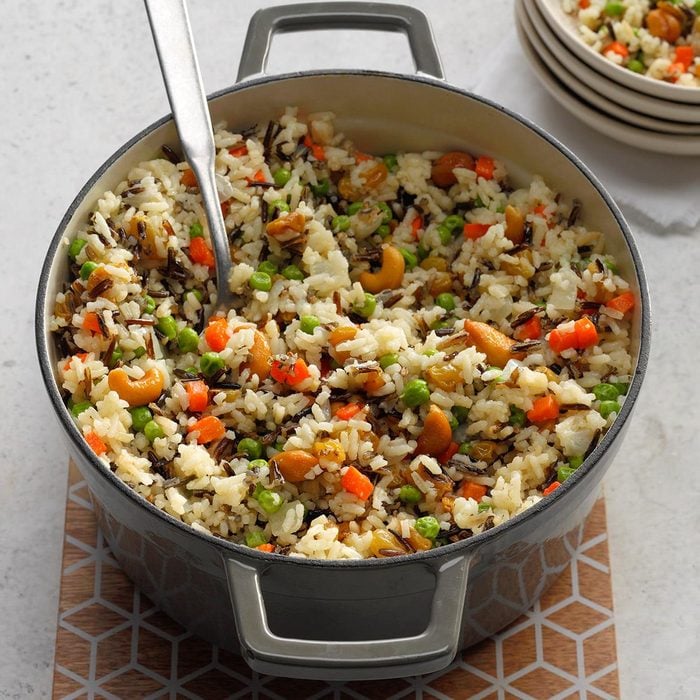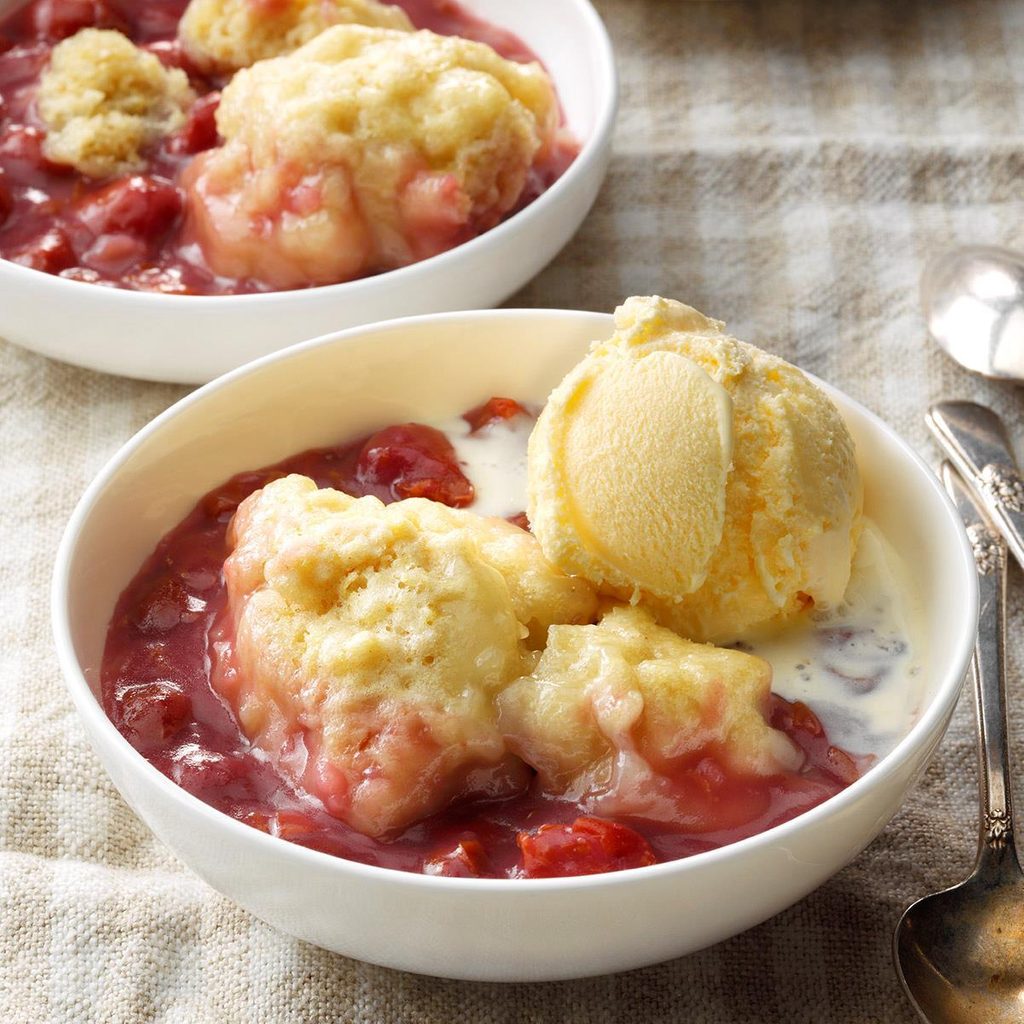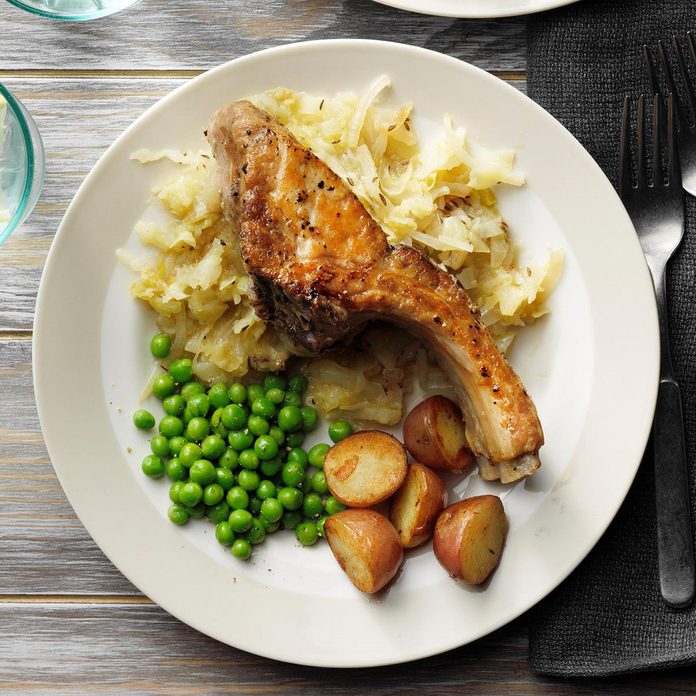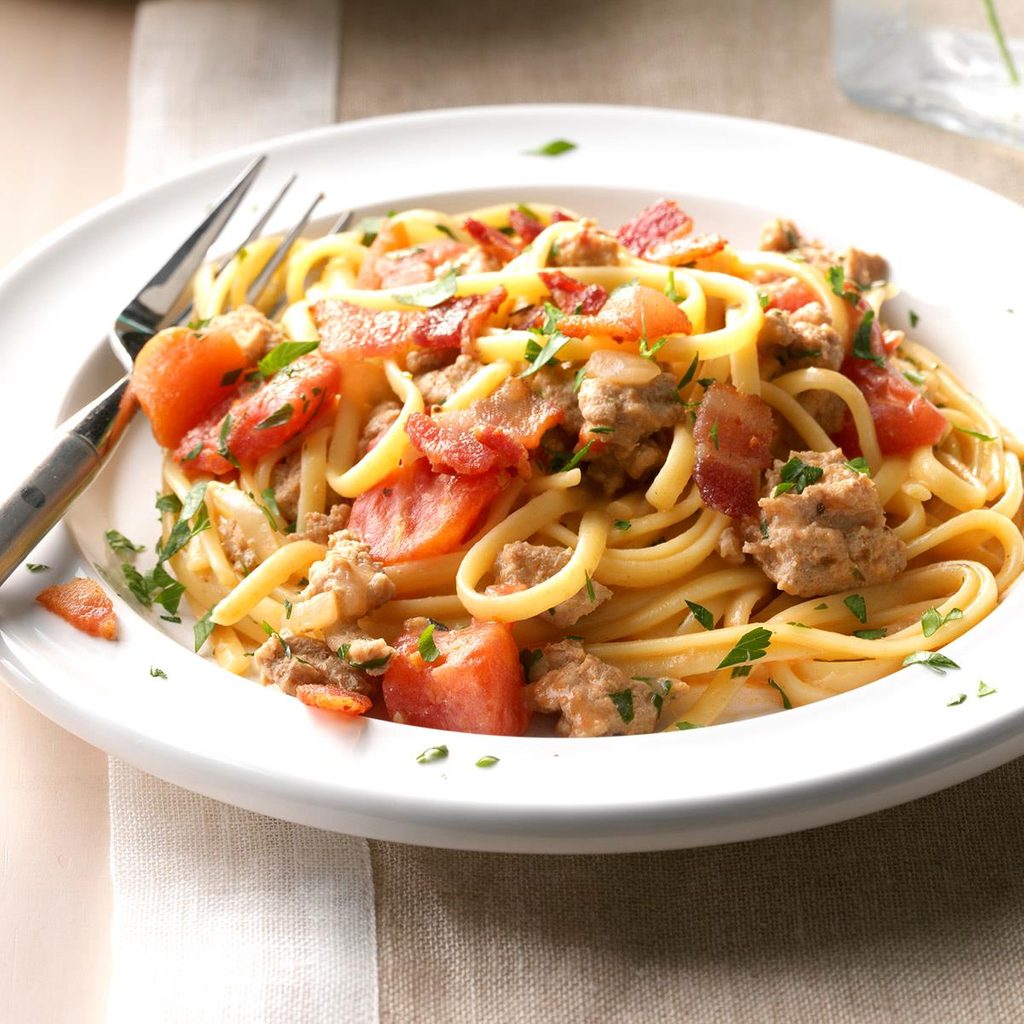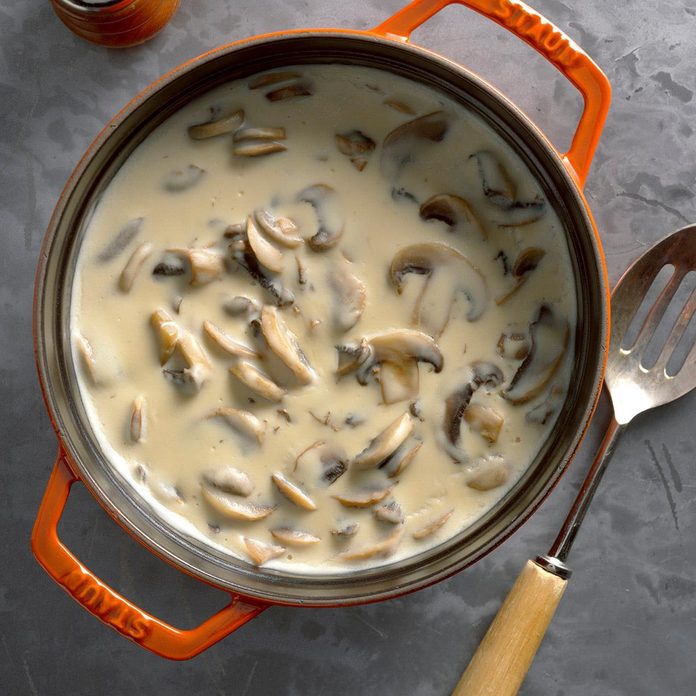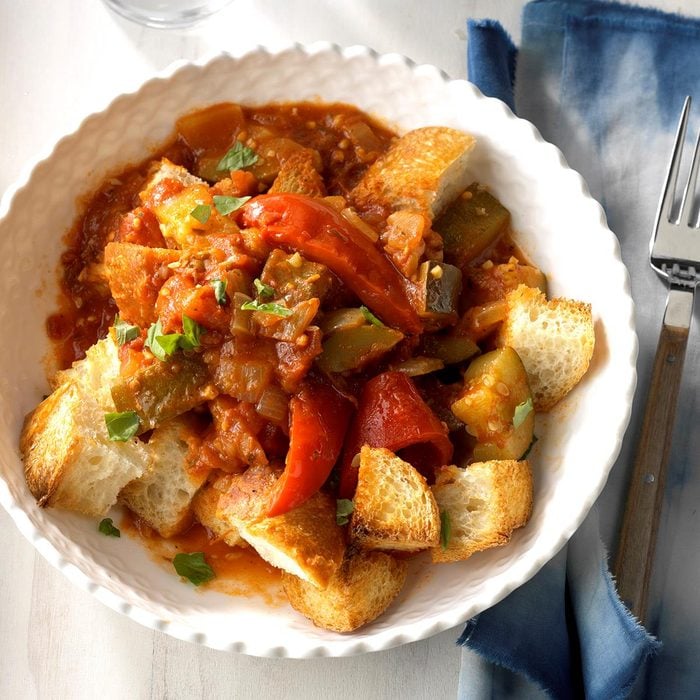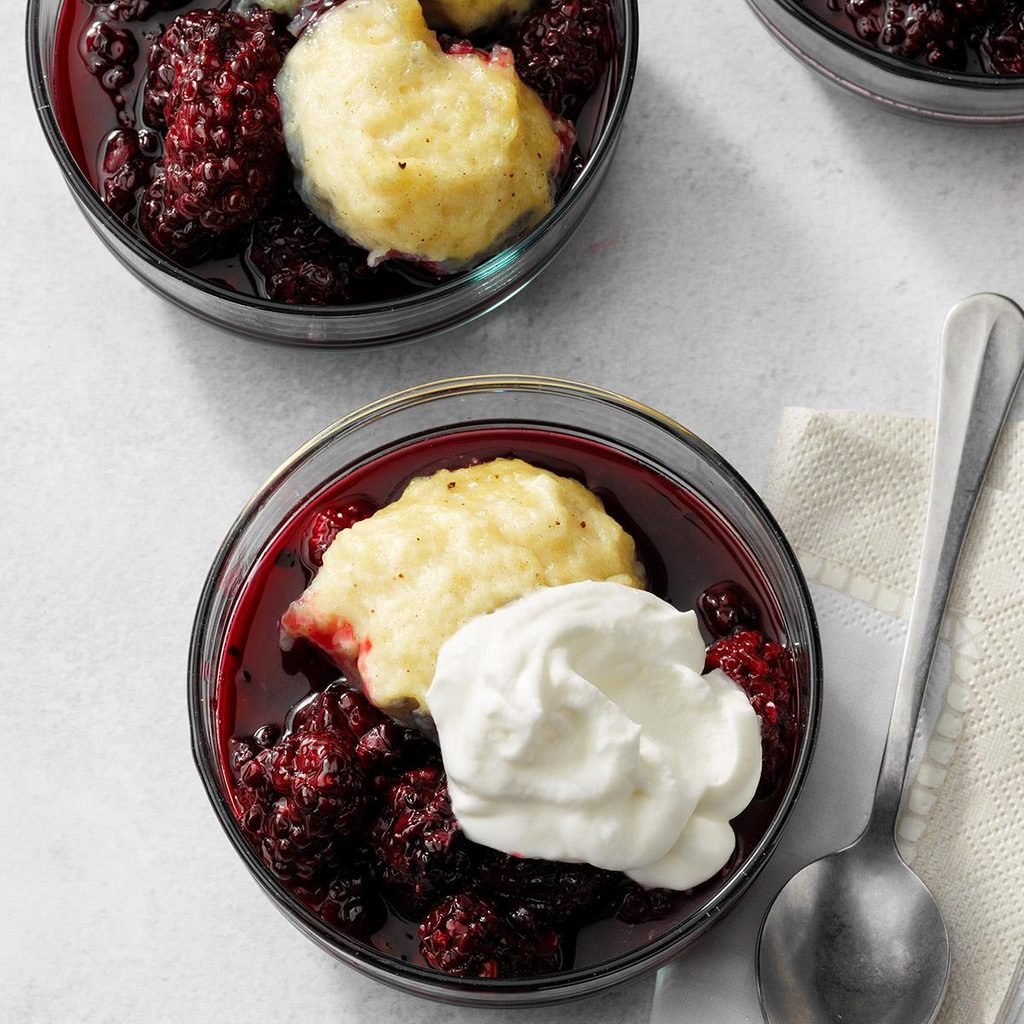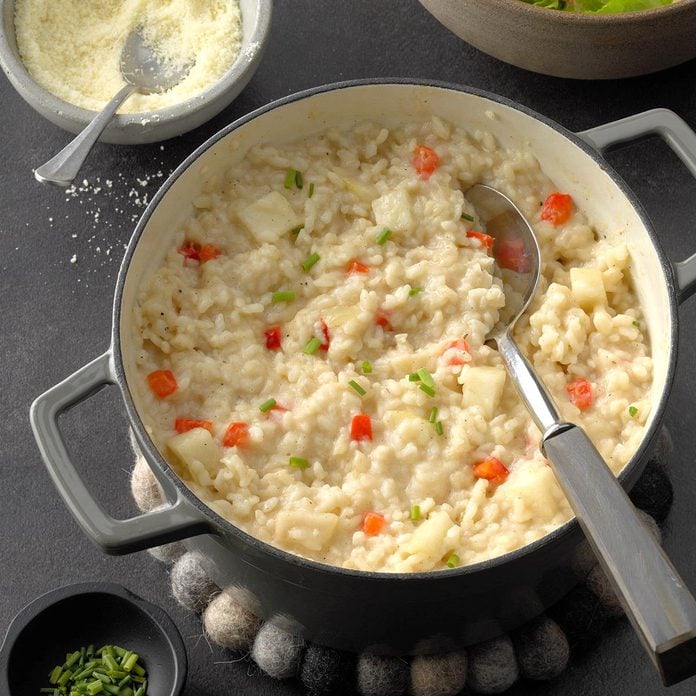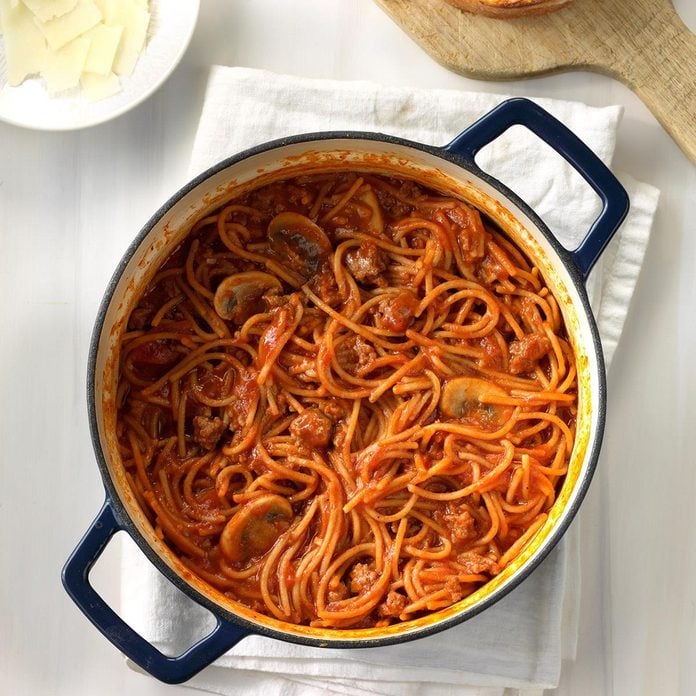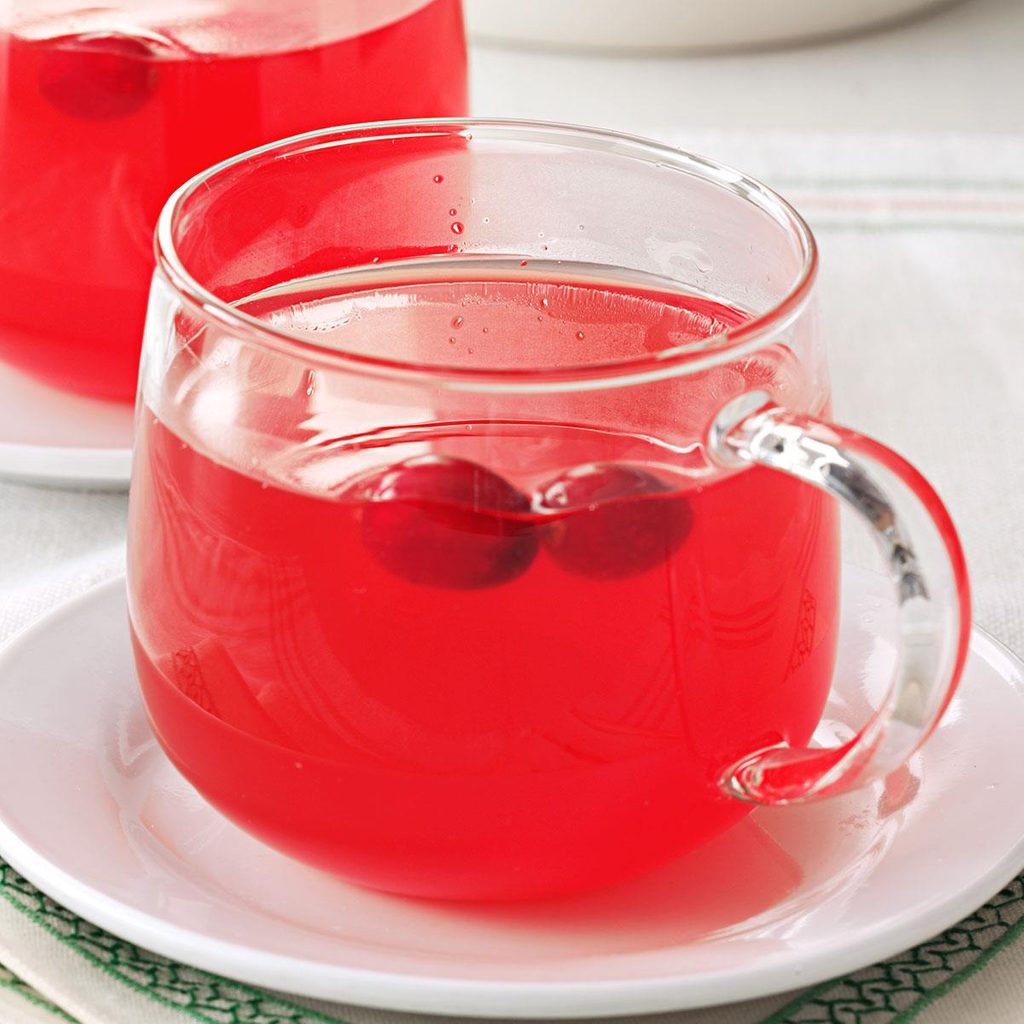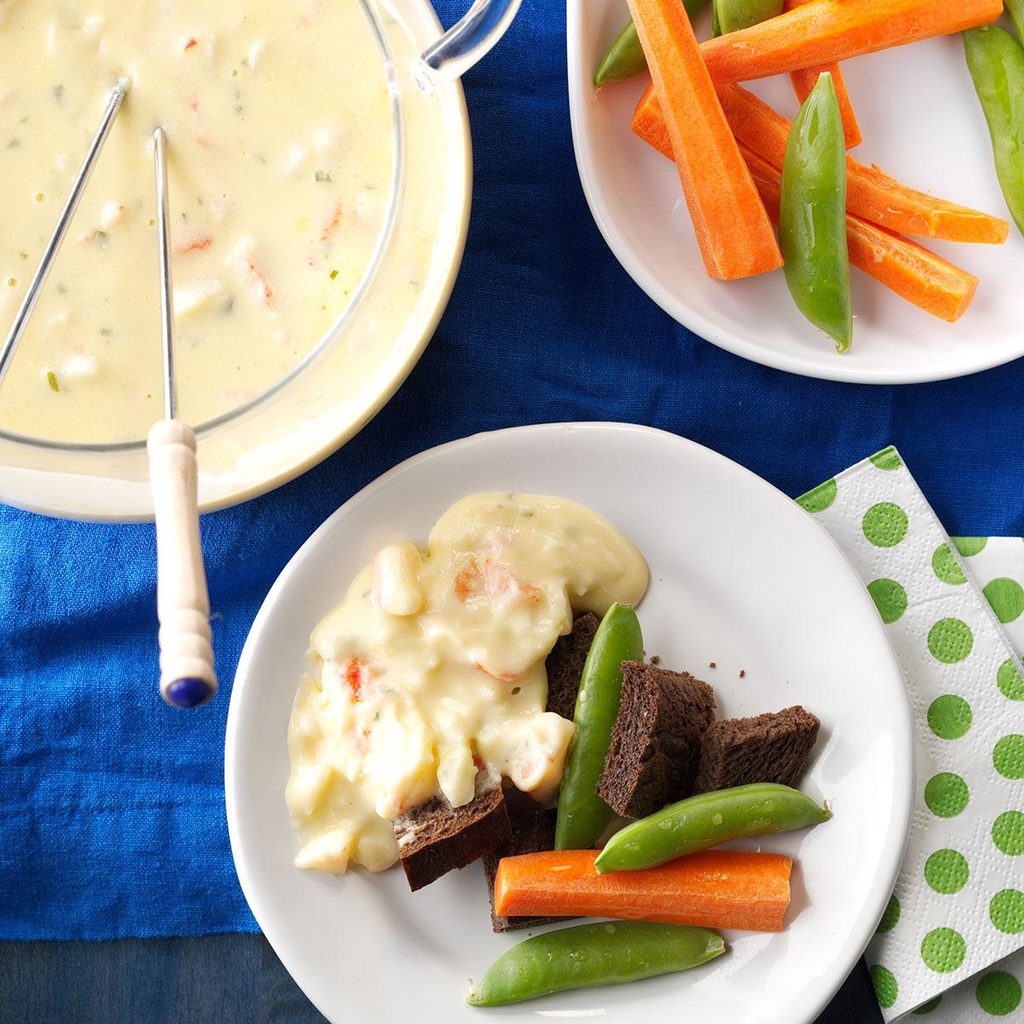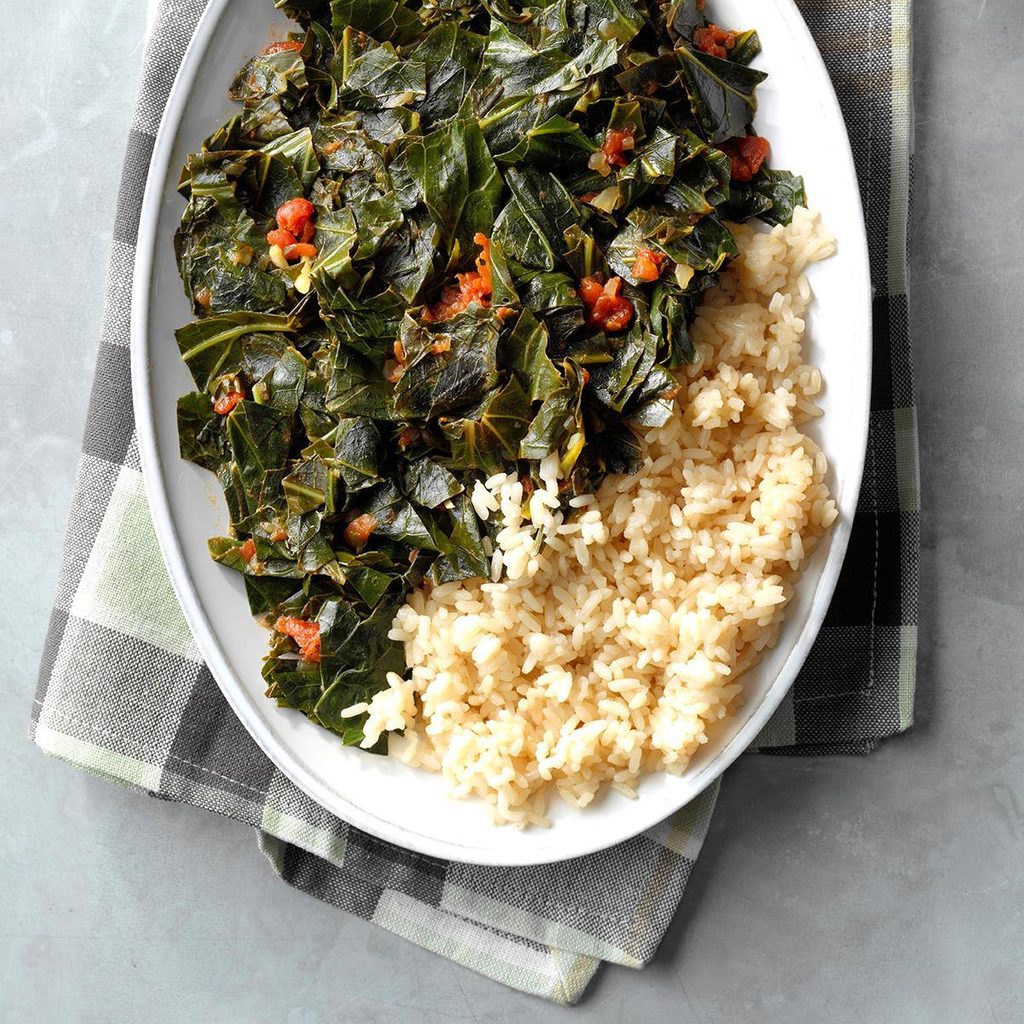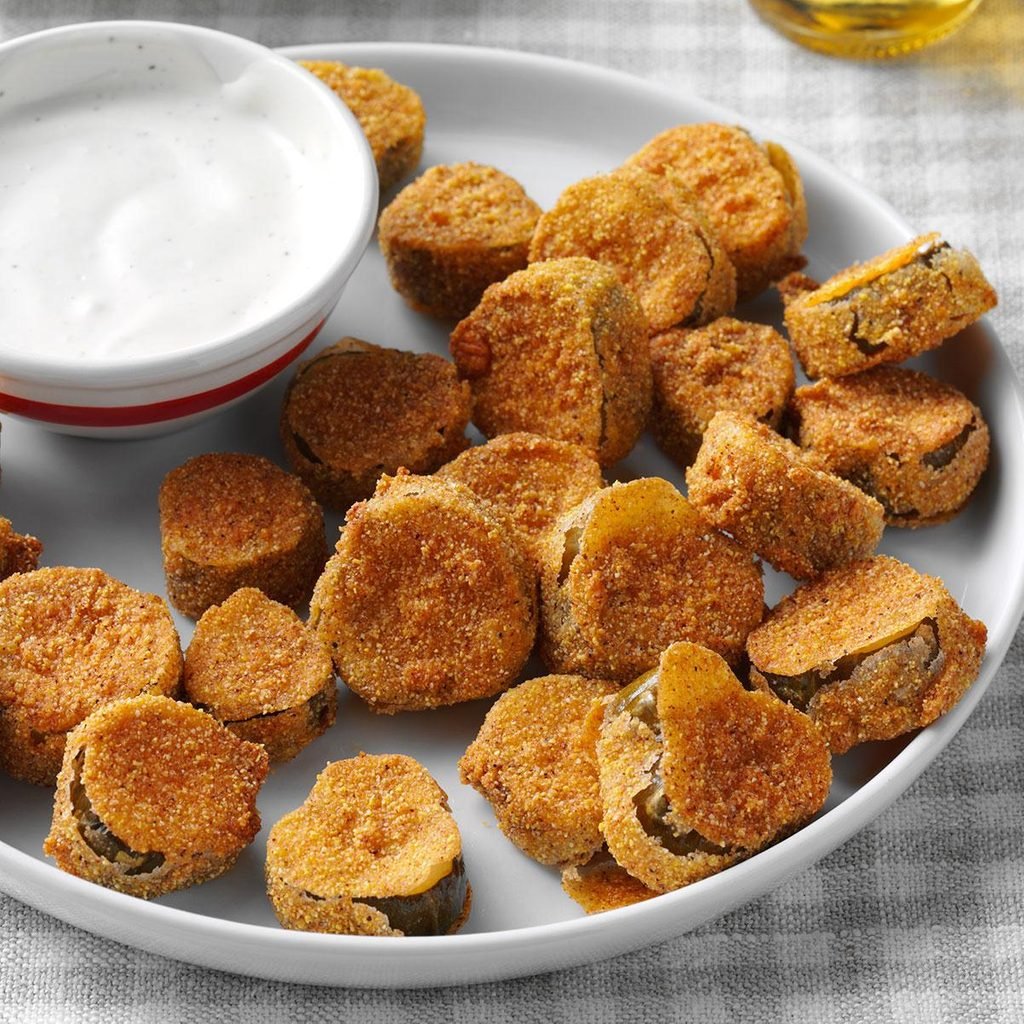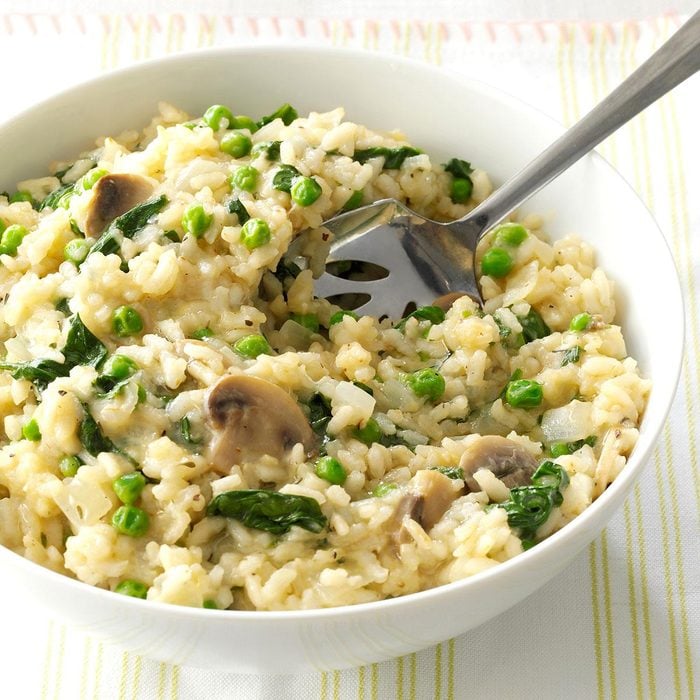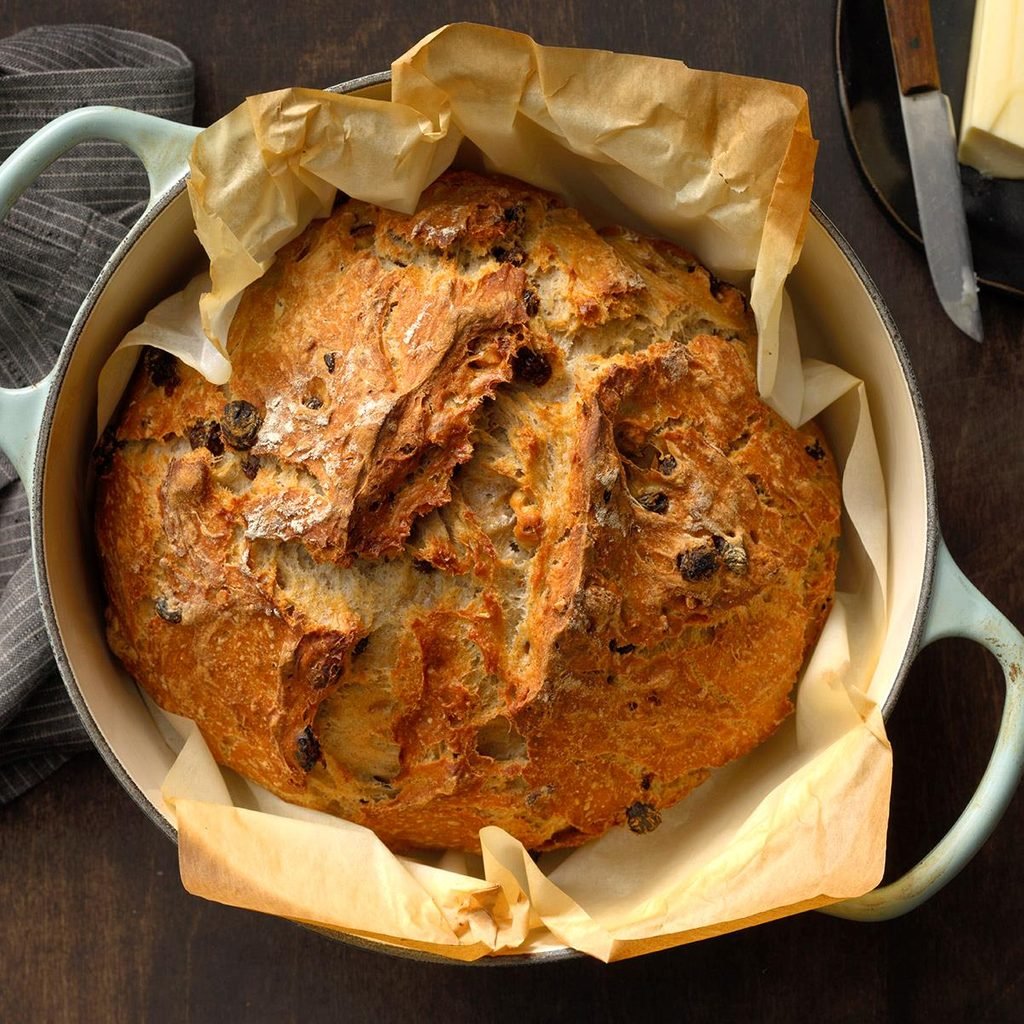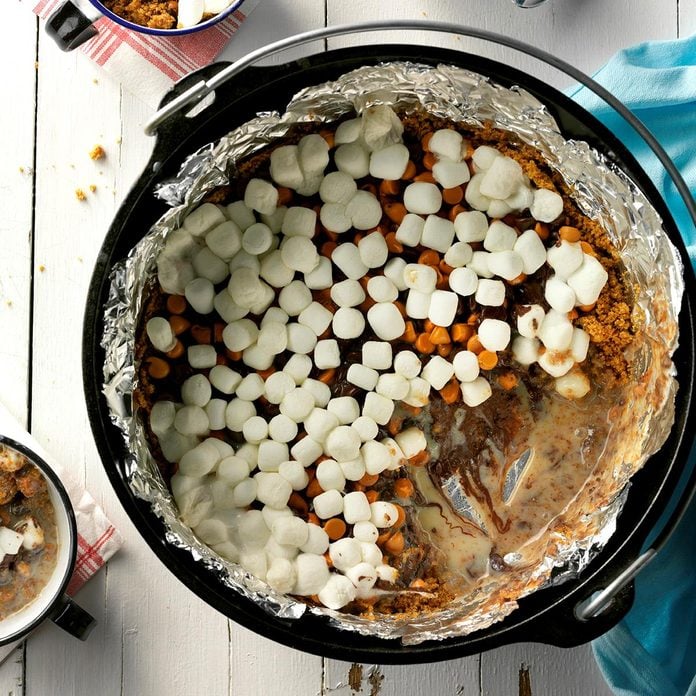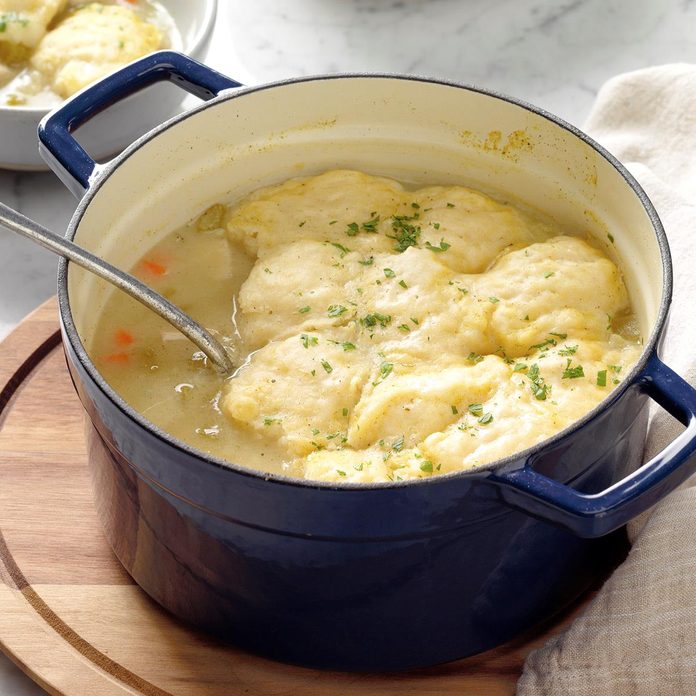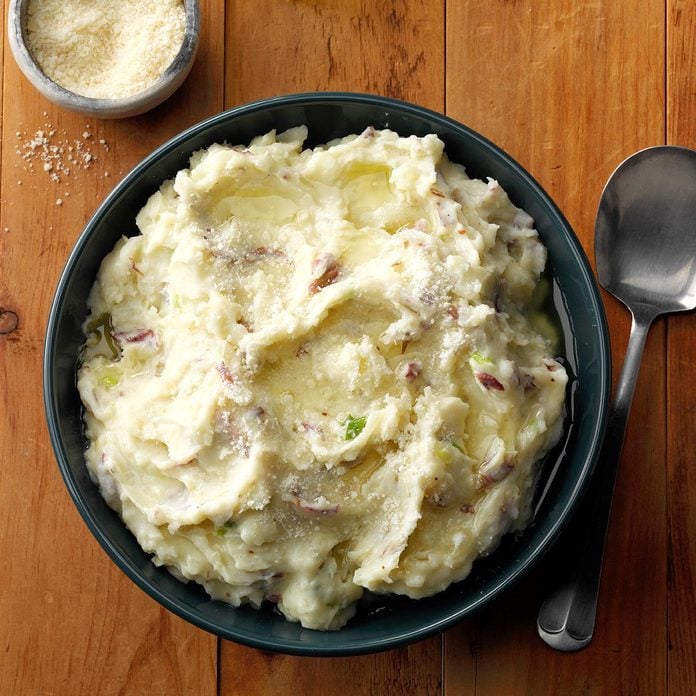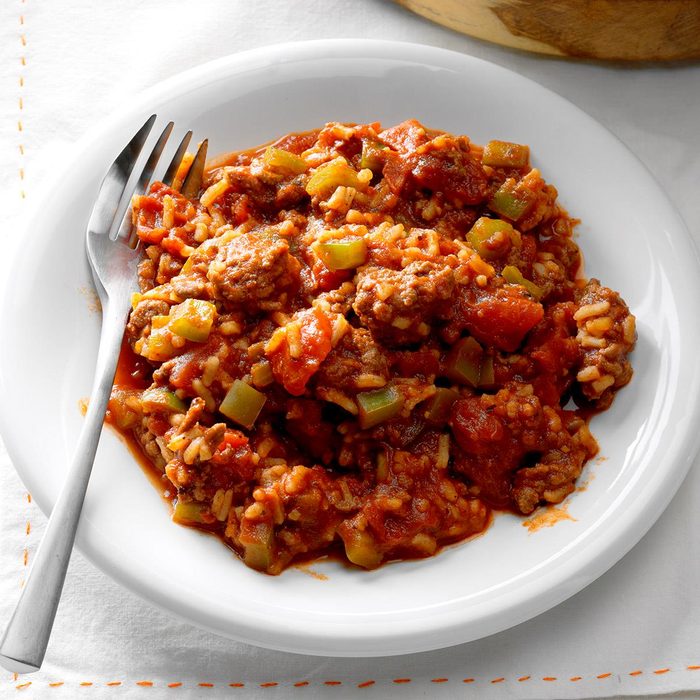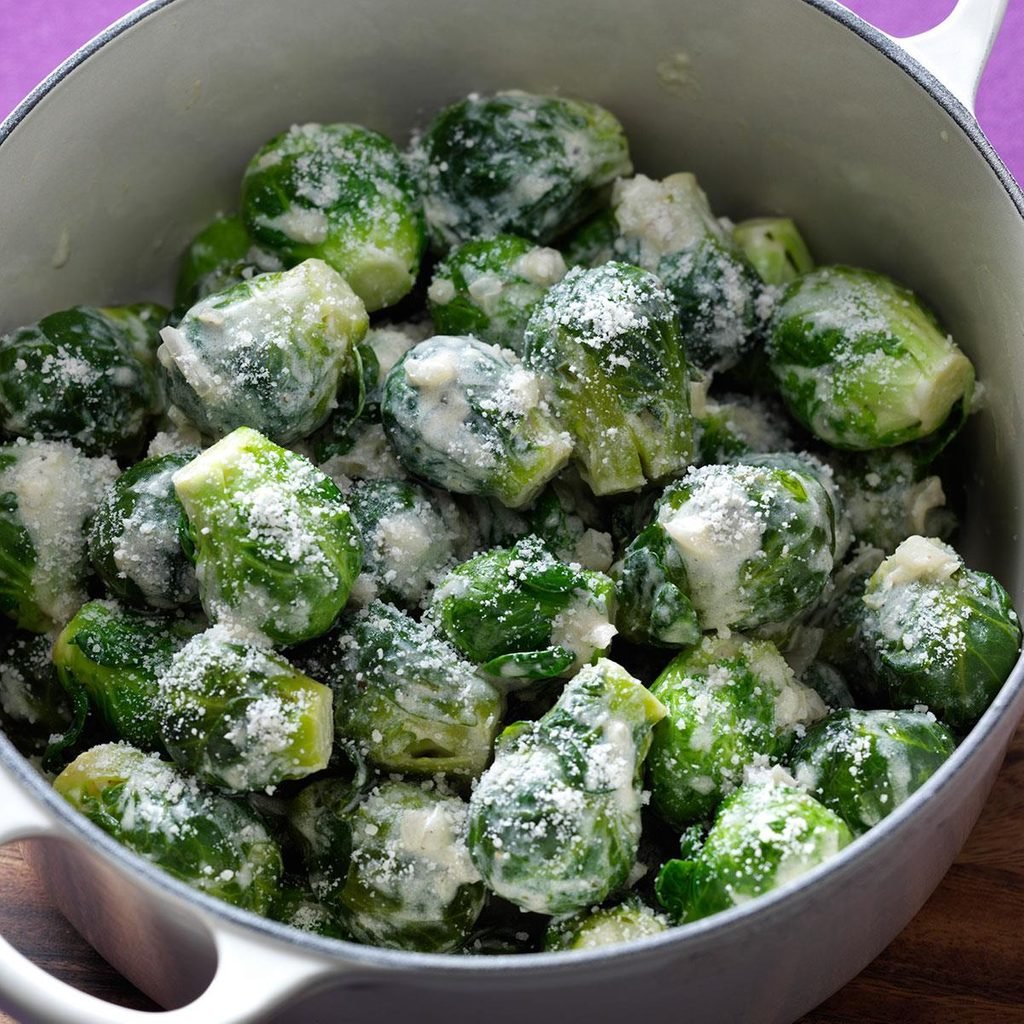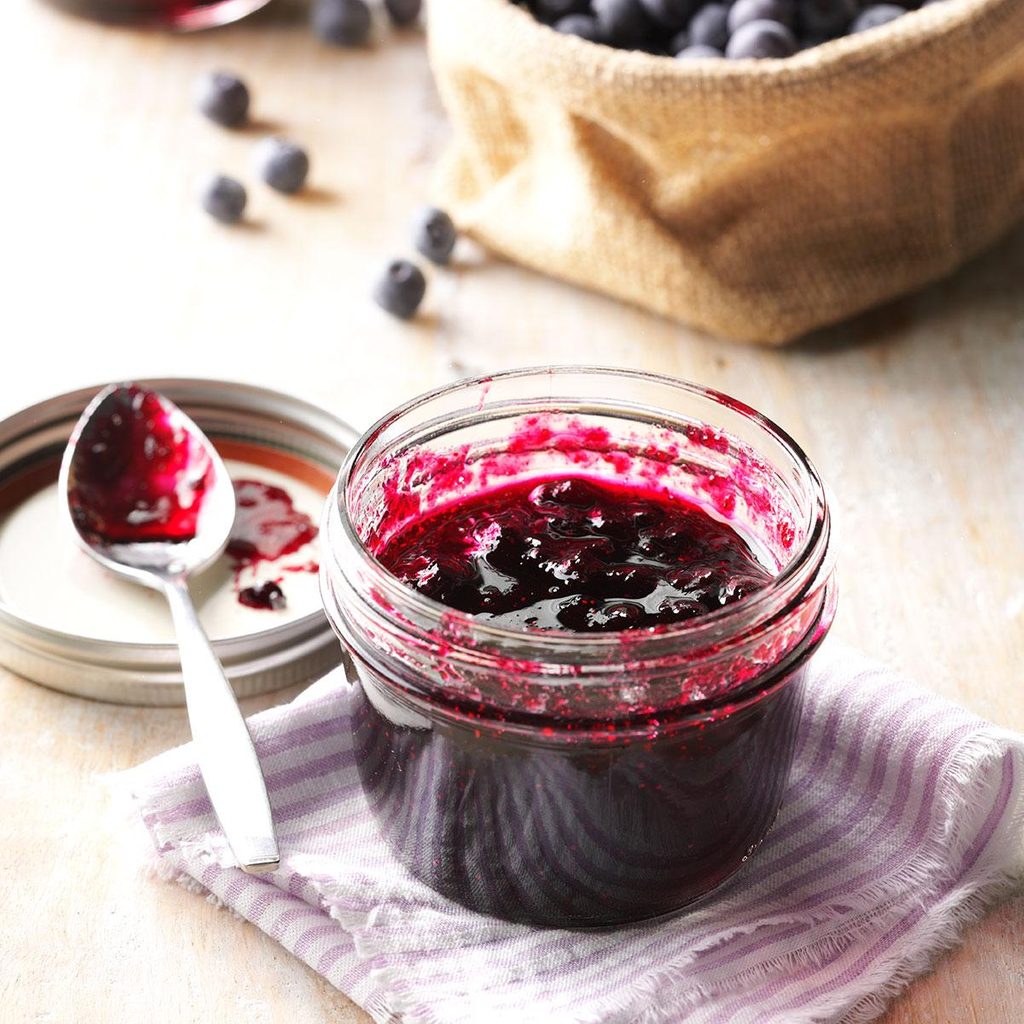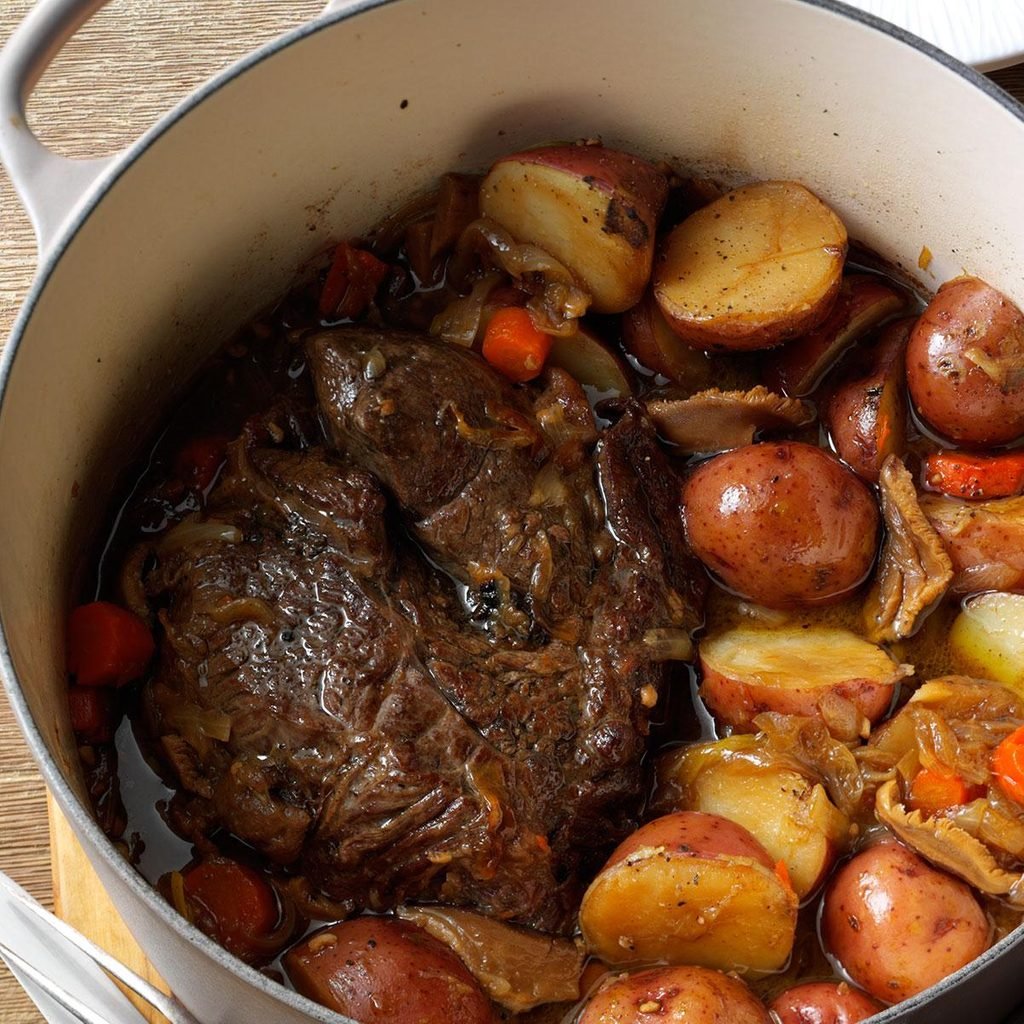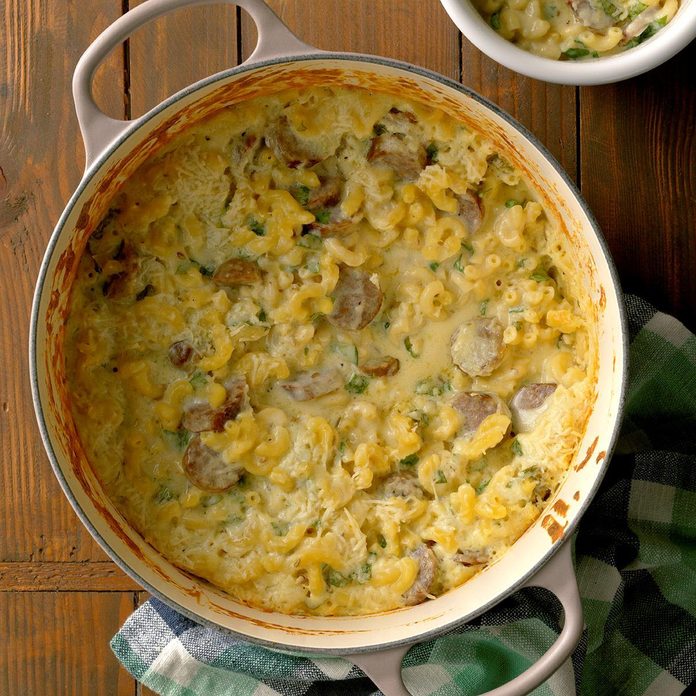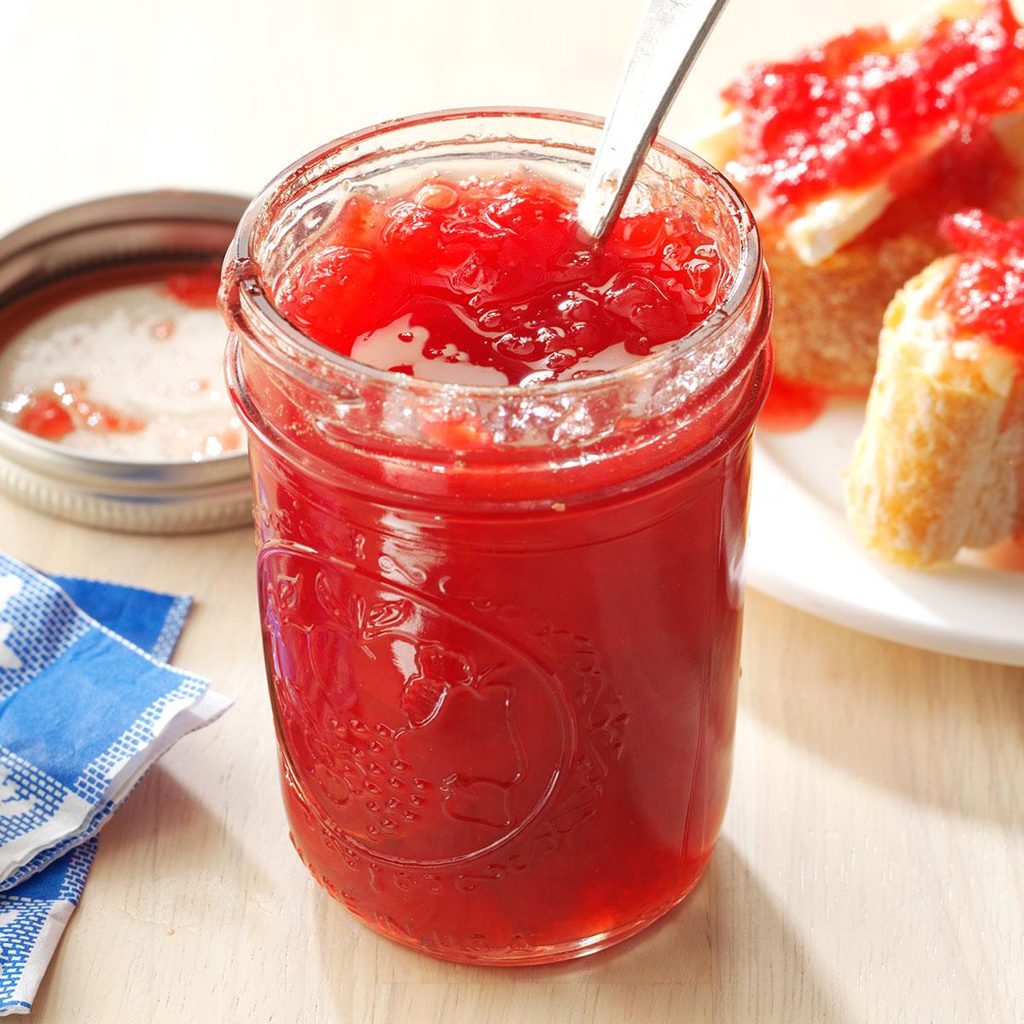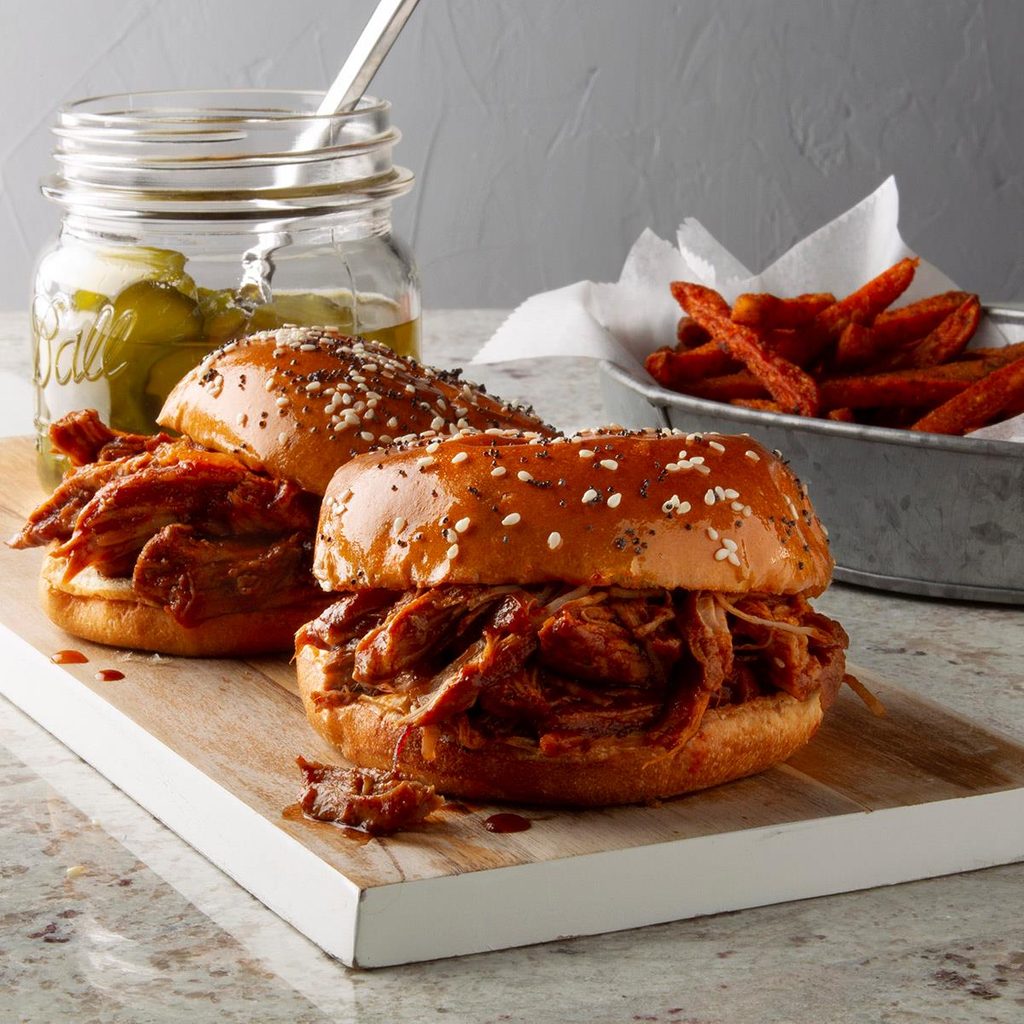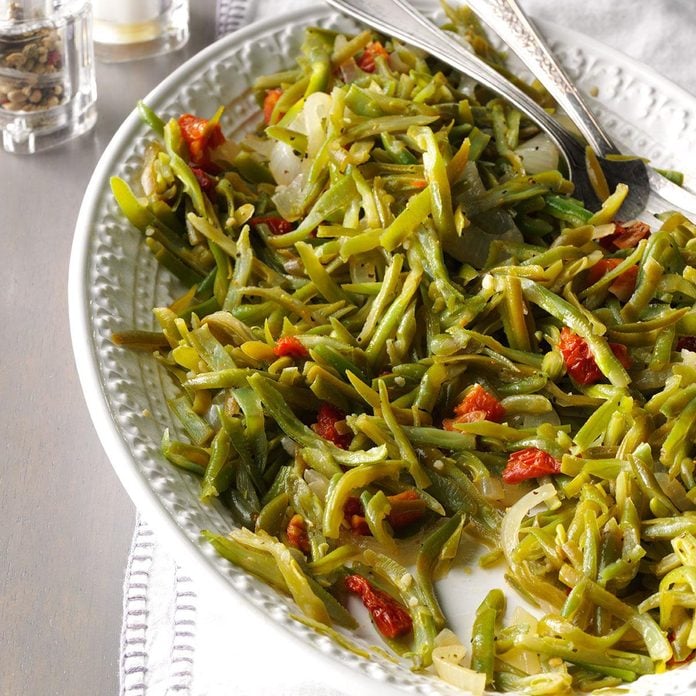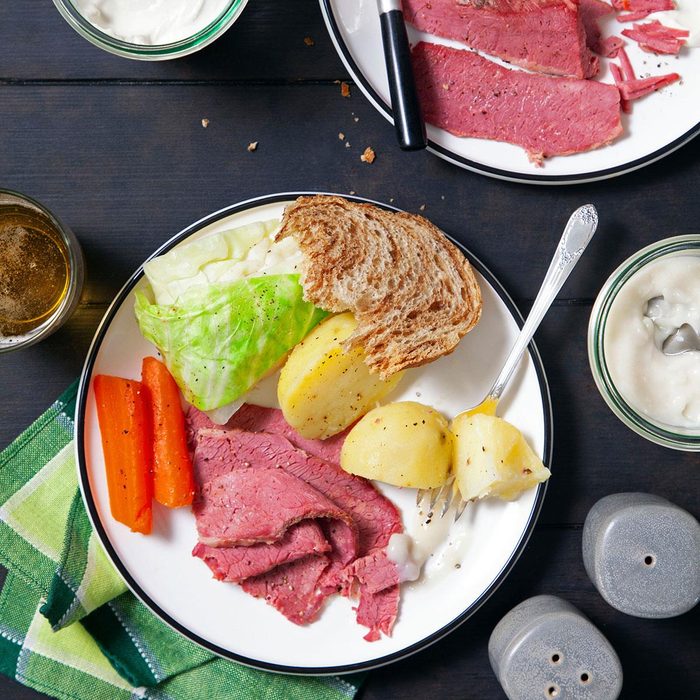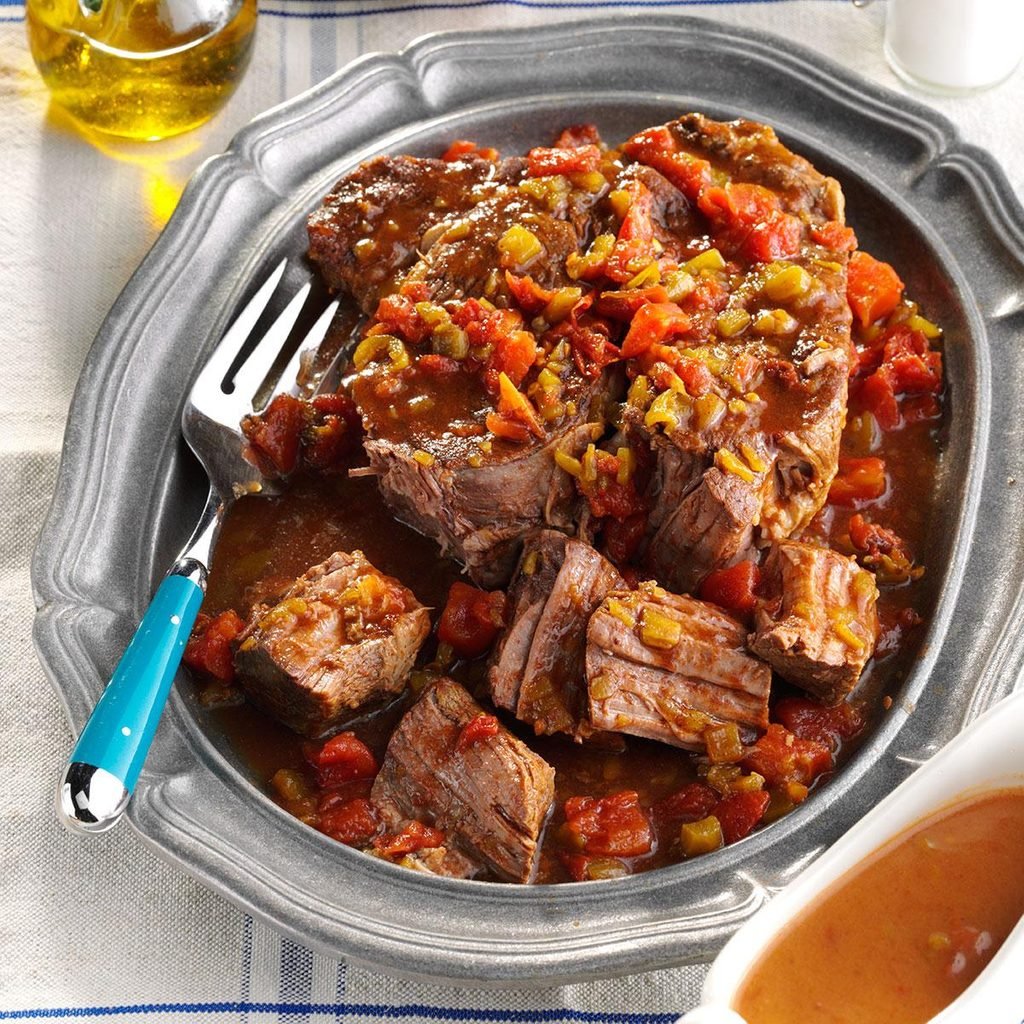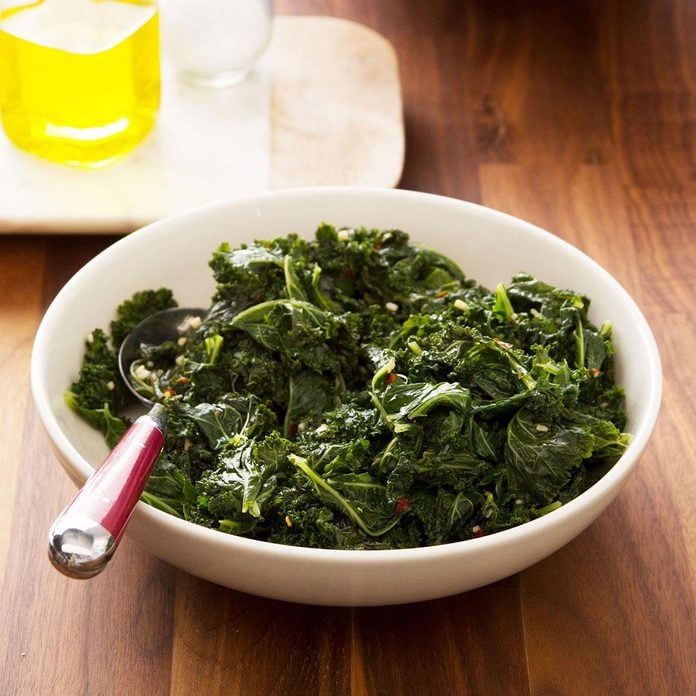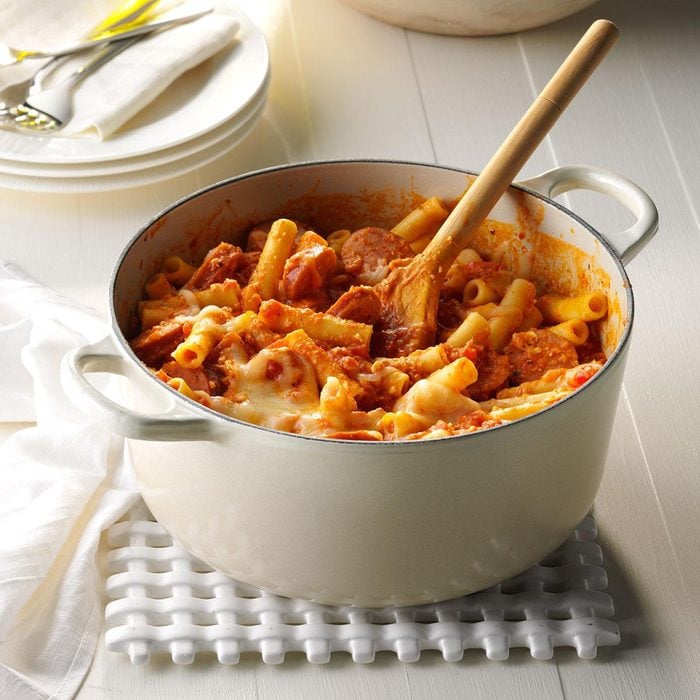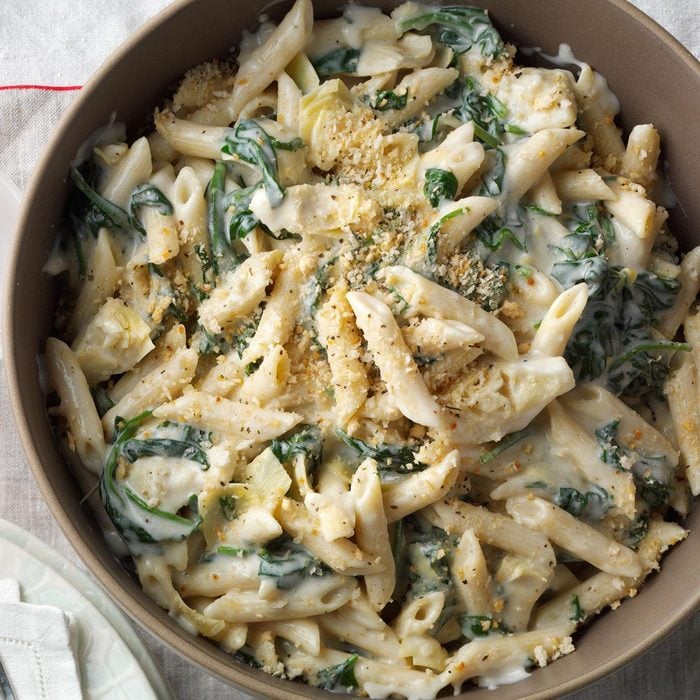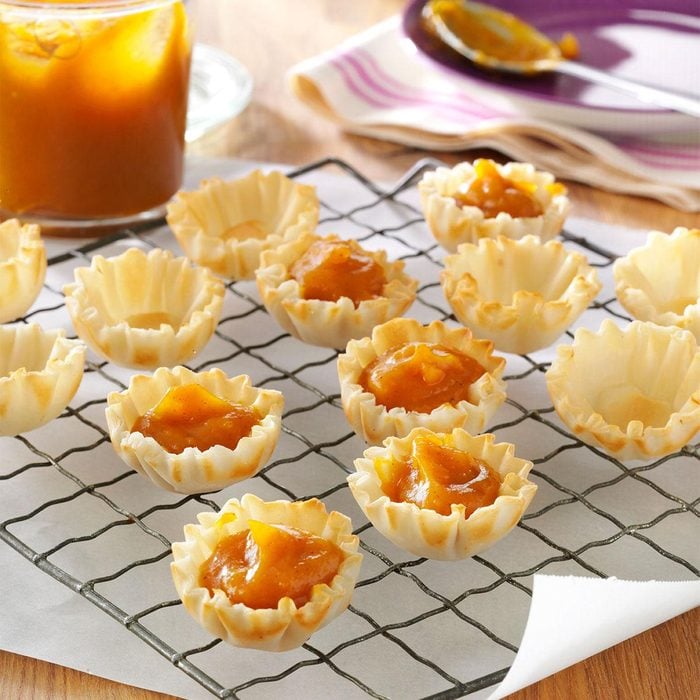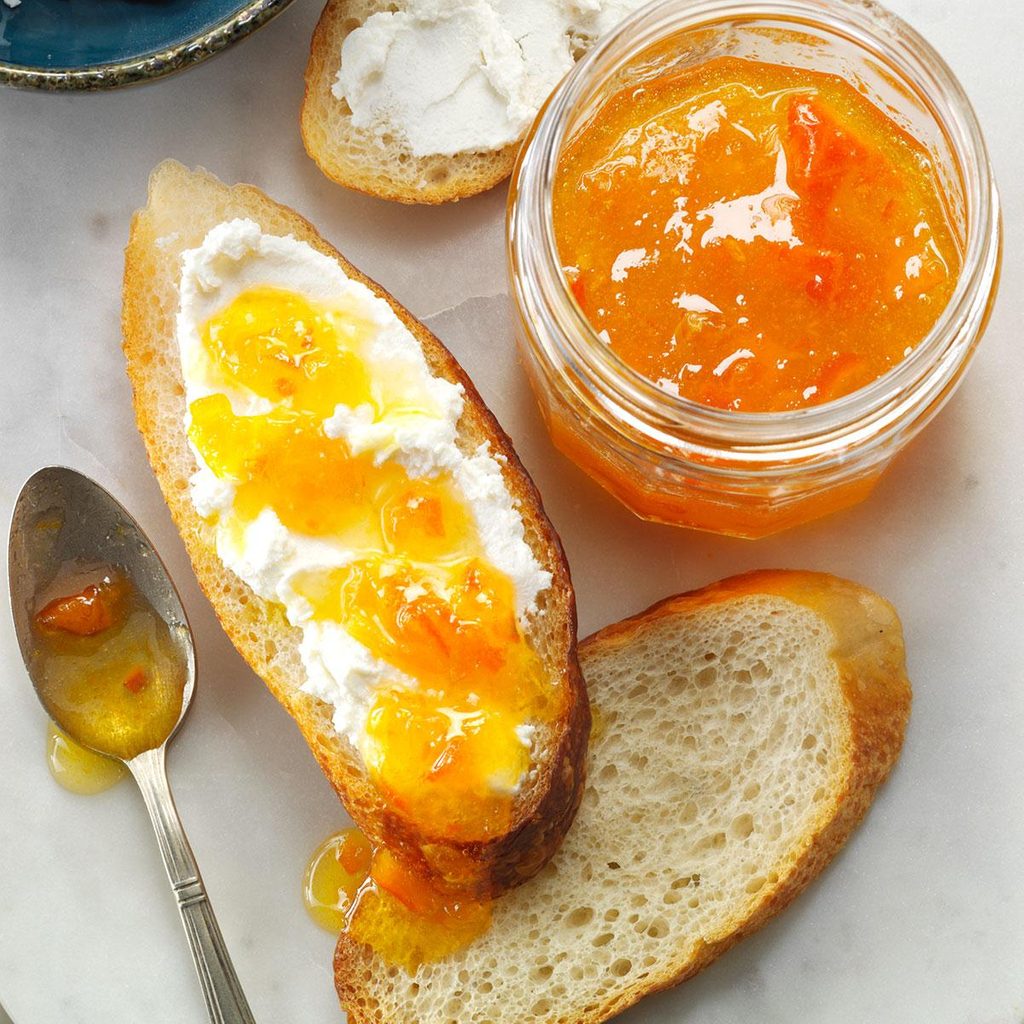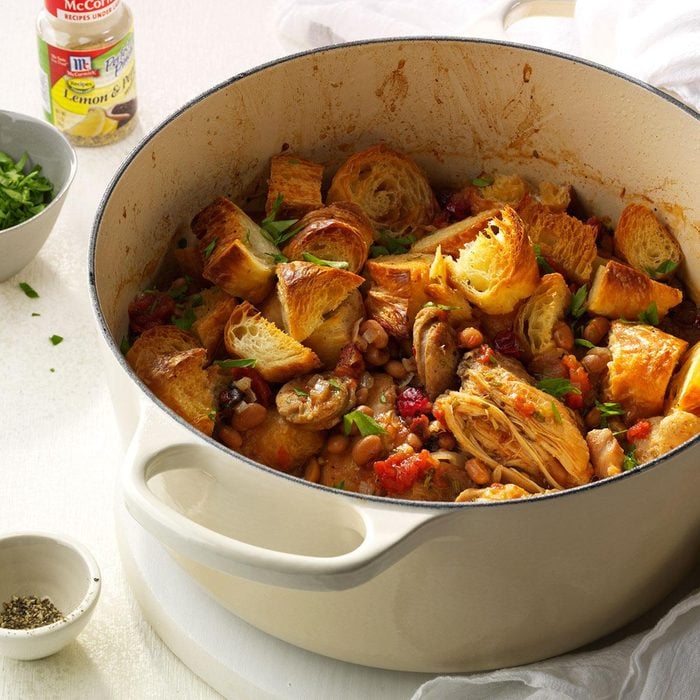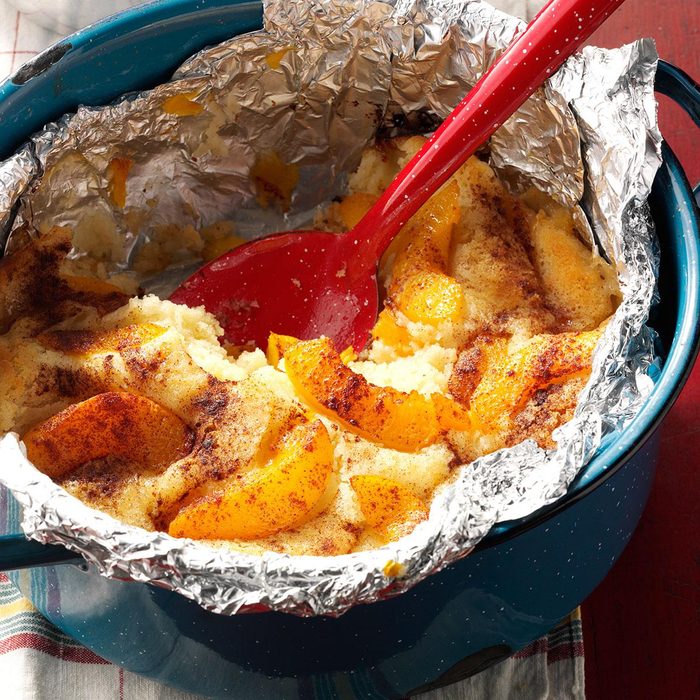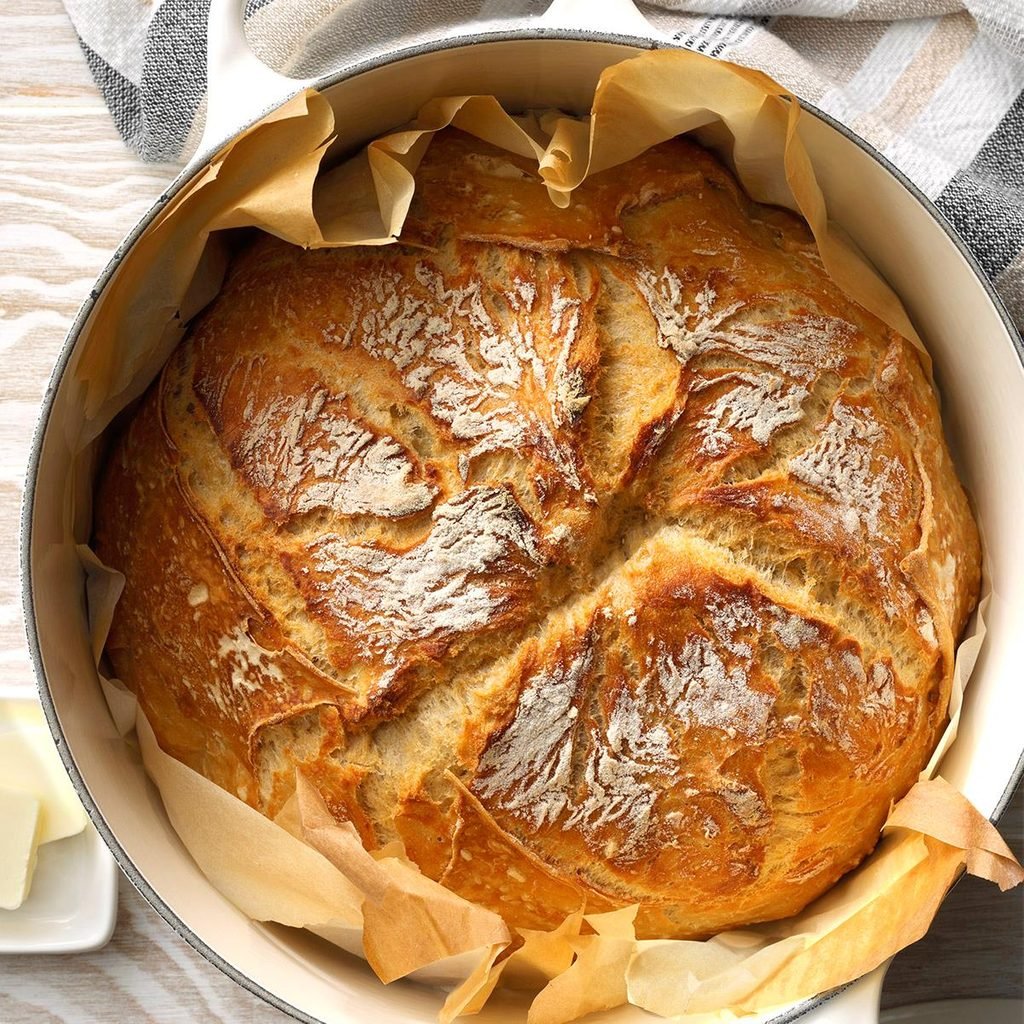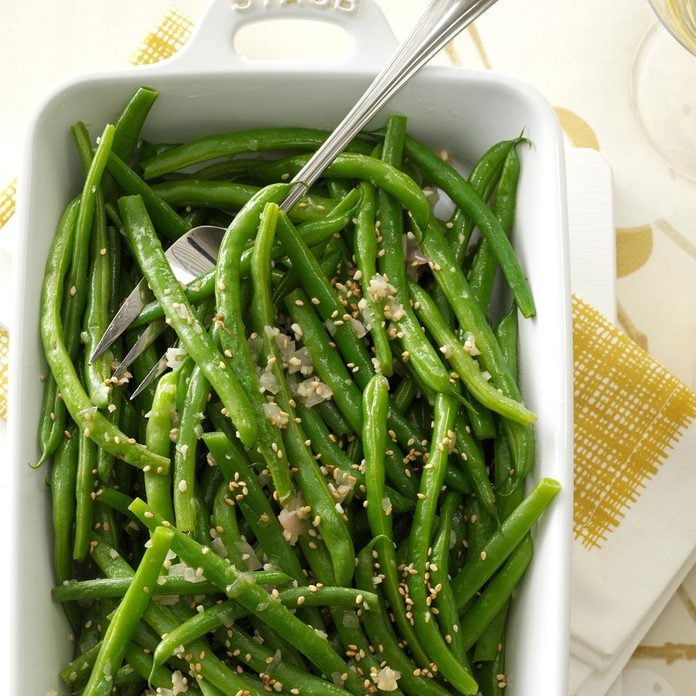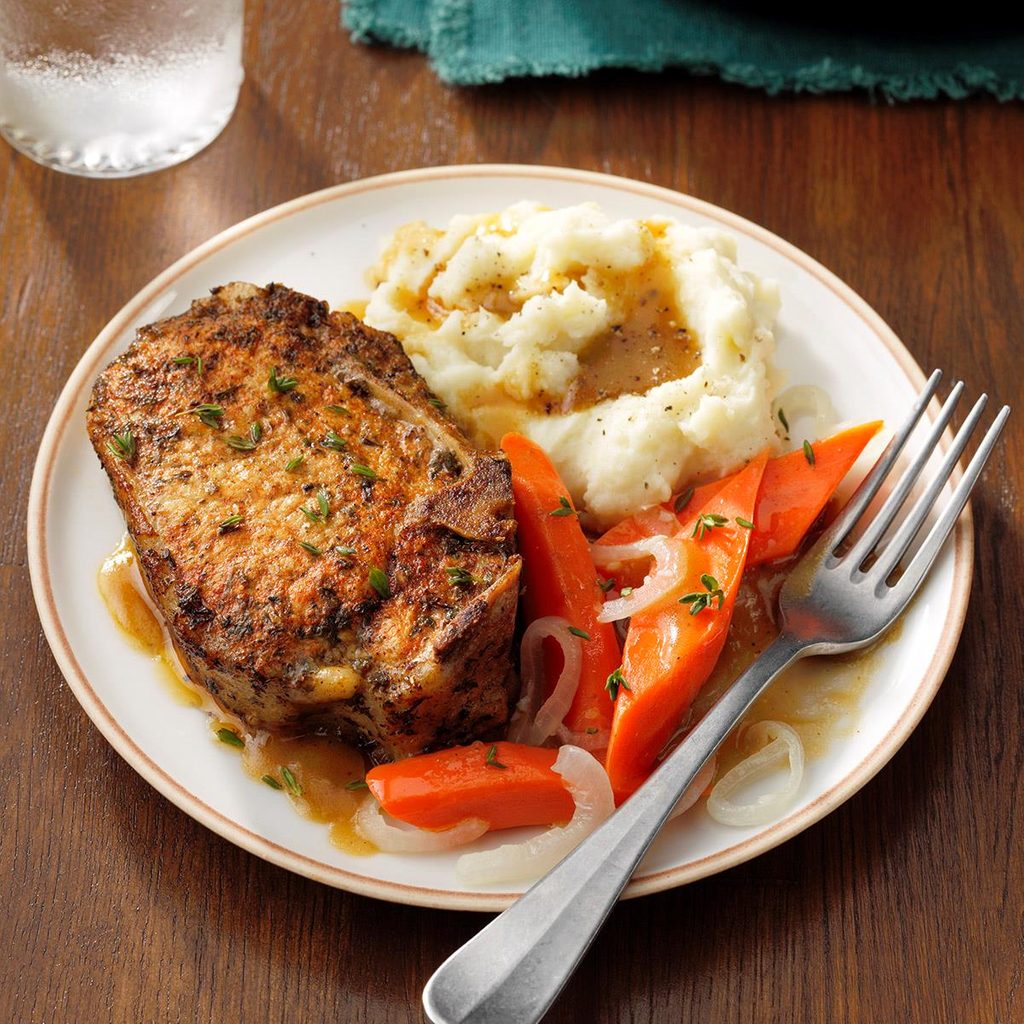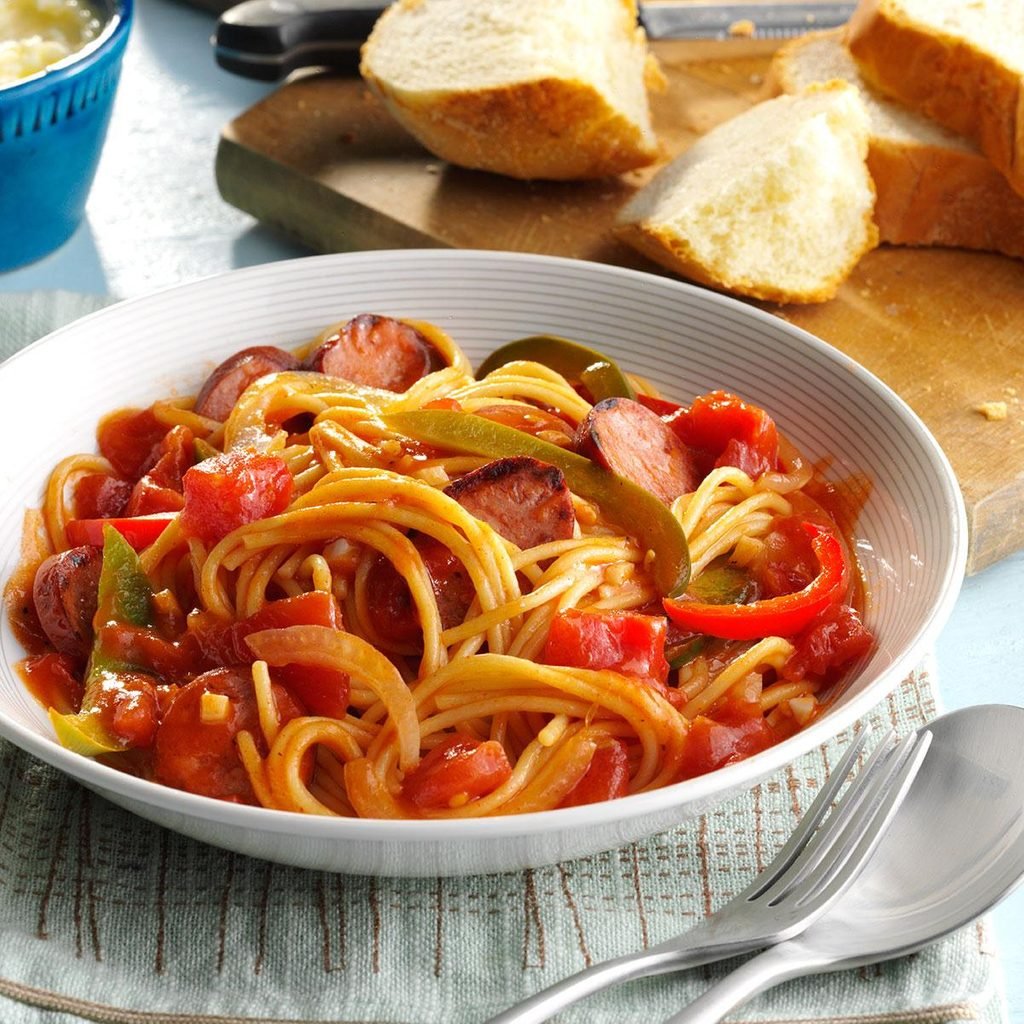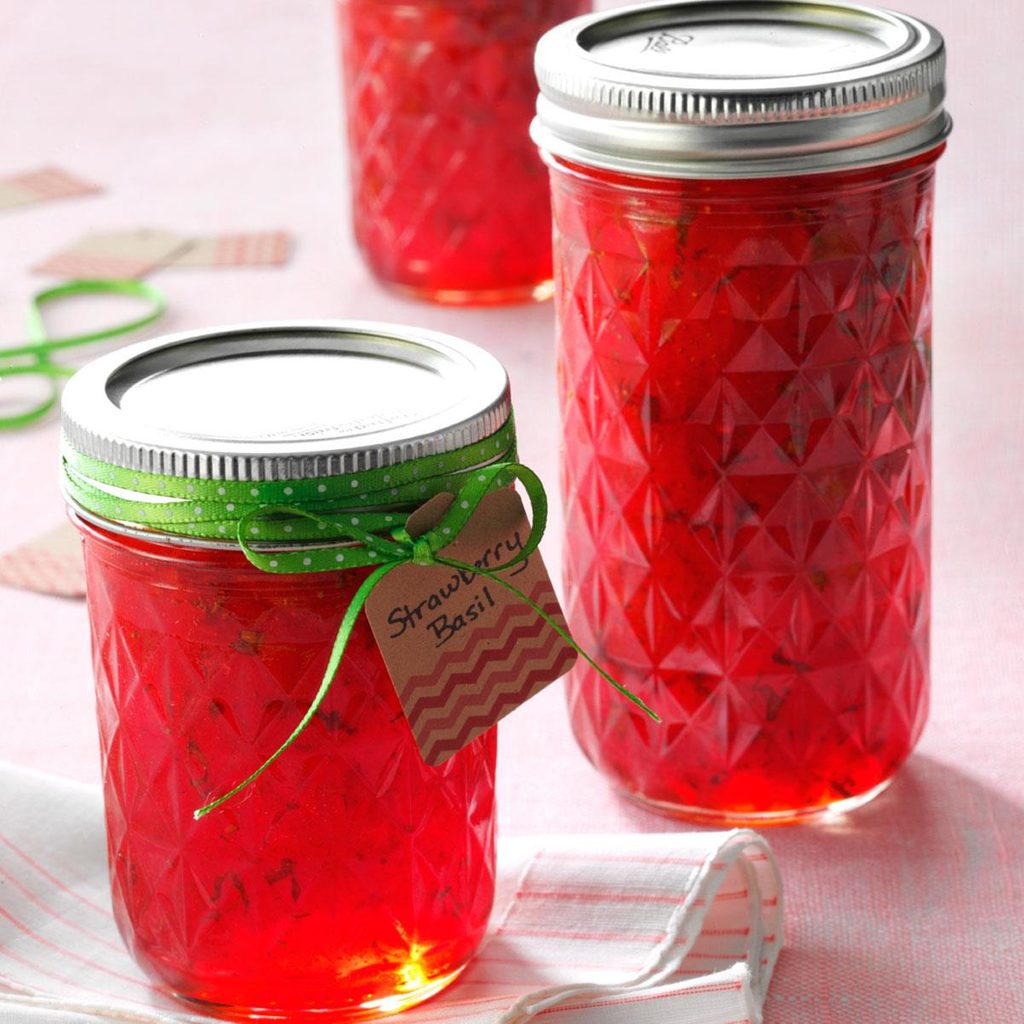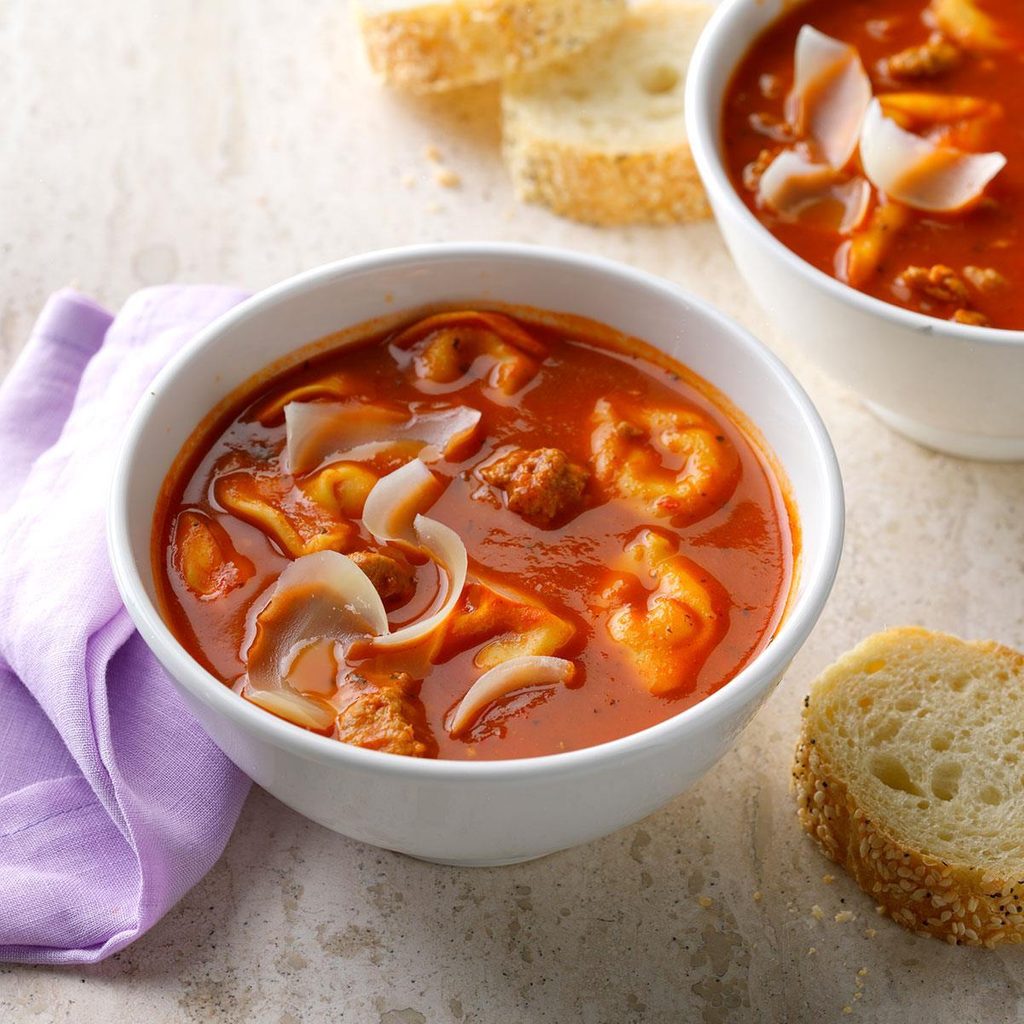The Best Chicken & Dumplings
Homemade chicken and dumplings harken back to my childhood and chilly days when we devoured those cute little balls of dough swimming in hot, rich broth. —Erika Monroe-Williams, Scottsdale, Arizona
Get Recipe
The entire family will enjoy digging into these
Dutch oven chicken recipes, too.
Dutch Oven Chocolate Dump CakeLooking for a quick dessert that will make people think you spent all day in the kitchen? This Dutch oven dump cake will wow your guests. Feel free to use your favorite pie filling in place of cherry. — Rashanda Cobbins, Milwaukee, Wisconsin
In need of a new Dutch oven?
Our Test Kitchen-approved Dutch oven is the perfect option.
Firehouse ChiliAs one of the cooks at the firehouse, I used to prepare meals for 10 men. This firehouse chili recipe was among their favorites. —Richard Clements, San Dimas, California. Looking for a healthier option? A
low-carb dinner doesn't get any more delicious than this.
Dutch Oven Cheesy Bacon & EggsFor campouts, my sister and I escape on horseback into the woods. We make this Dutch oven breakfast casserole the first morning, then love the leftovers for the rest of the trip. —Mary Burris, Okeechobee, Florida
You've reached for it a hundred times, but have you ever wondered, "
What is a Dutch oven?" Find out here.
Dutch Oven PizzaWe created this Dutch oven pizza to get more use out of our favorite piece of cookware. We couldn't believe how well it turned out! If you're not a mushroom fan, feel free to substitute different toppings. —Taste of Home Test Kitchen
Grilled Chorizo and Shrimp PaellaThis shrimp paella recipe is not only healthy but satisfying, too! It has vitamin C from the sweet red pepper, fiber from the rice, and lean protein from the chicken sausage. — Daniel Bartholomay, Fargo, North Dakota
Chickpea Tortilla SoupThis vegan tortilla soup recipe is healthy, filling and family-friendly! We love how hearty and flavorful it is. We like to play around with the different toppings we add each time it's served. —Julie Peterson, Crofton, Maryland
Still hungry? These
vegetarian Dutch oven recipes are equally delicious.
Sicilian Steamed LeeksI love the challenge of developing recipes for my garden leeks, a delicious underused vegetable. This Italian-flavored dish is a family favorite. —Roxanne Chan, Albany, California
Curry Shrimp and RiceMy family and I absolutely love curry shrimp and rice. I created this version so I I can make it in a hurry. Except for the butter and shrimp, all the ingredients are right in my pantry. To add a little heat, we like to stir in a tablespoon of fresh ground chili paste. —Angela Spengler, Niceville, Florida
Lobster BisqueMy grandmother would make lobster bisque all the time, so I've always thought of it as comfort food. If you don't care to cook live lobsters, they can usually be cooked where you buy them. Just be sure to say that you want to keep the shells; they are the key to the most delicious soup! —
James Schend,
Dairy Freed
Make sure you're not making any of these
Dutch oven mistakes.
Peach Crumble DessertWe save our forks after dinner so we can enjoy this yummy, old-fashioned peach crumble dessert. It’s delicious, so easy to make and wonderful with ice cream. —Nancy Horsburgh, Everett, Ontario
One-Pot Mac and CheeseThis one-pot mac and cheese is a family favorite, and my 3-year-old is always thrilled to see it coming to the dinner table. We love to add sliced smoked sausage to this creamy mac recipe! —Ashley Lecker, Green Bay, Wisconsin
Carrots LyonnaiseThis recipe from a junior high home economics class was brought home by my sister Laurie. My family liked it so much that it became a part of our Christmas dinner tradition. — Elizabeth Plants, Kirkwood, Missouri
Lunch-Box Chicken SoupA friend gave me this recipe, and I tweaked a few things to make it healthier. It’s so delicious and quite easy to make! I use it for family gatherings, church functions, care packages ... just about anything. For shortcuts, I sometimes replace the celery and carrots with 2 cups of frozen mixed vegetables. The prepackaged rice saves time, too, so you can have the soup ready and waiting even when the kids are busy with activities. —Jean Ann Fairchild, Shelby, Ohio
Find more
Dutch oven cooking tips here.
Spiced Apple ChiliNothing says fall like chili and apples. I use smoked paprika to give this slightly sweet chili a smoky kick. —Joyce Moynihan, Lakeville, Minnesota
Cashew Rice PilafThis hearty dish will add pizazz to your plate with its beautiful blend of flavors and colors. I often serve it as a main course with salad and bread. —Tina Coburn, Tucson, Arizona
Cherry GruntBack when I was cooking the hot lunch main dish for about 1,300 students a day, I liked to make this simple old-time dessert for my husband and sons. A scoop of ice cream is perfect.
Glazed Corned BeefI serve this delicious entree each St. Patrick's Day, even though my family is Dutch, not Irish. The tender meat is topped with a simple, tangy glaze that is so tasty. Leftovers make excellent Reuben sandwiches. —Perlene Hoekema, Lynden, Washington
Creamy Red Pepper SoupEveryone loves this soup’s taste, but no one guesses that pears are the secret ingredient. —Connie Summers, Augusta, Michigan
Country Pork 'n' SauerkrautThe secret ingredient in this recipe is the applesauce. When everything is cooked, you wouldn’t know it’s in there—yet the taste is just a bit sweeter. My mother and grandmother once ran a beanery for a train crew. That inspired a lot of my cooking. In fact, I adapted this recipe from one of theirs. Luckily for me, my husband likes to eat what I fix as much as I like to cook it! —Donna Hellendrung, Minneapolis, Minnesota
Thai Shrimp SoupThis tasty soup comes together in minutes, and it’s a crowd pleaser. The ingredients are available in my little Maine grocery store, too. —Jessie Grearson-Sapat, Falmouth, Maine
Buffalo Sloppy JoesLean ground turkey makes this a lighter sloppy joe than the standard ground beef version. A hefty splash of hot sauce and optional blue cheese provide an authentic Buffalo-style flavor. —Maria Regakis, Saugus, Massachusetts
Turkey Linguine with Tomato Cream SauceI love an easy weeknight meal! This meal comes together quickly and uses up the half block of cream cheese that always ends up in my fridge. —Amy Lents, Grand Forks, North Dakota
Creamy MushroomsSimply prepared yet so satisfyingly good, these mushrooms are creamy and cozy. —Mary Lou Boyce, Wilmington, Delaware
Summer Bounty RatatouilleMake use of your garden's surplus with this comforting dish from the Provence region of France. It's a vegetable dish traditionally made with eggplant, tomatoes, onions, zucchini, garlic, bell peppers and various herbs. I highly recommend accompanying it with some freshly baked bread. —Phyllis Jacques, Venice, Florida
Cabbage Sausage SupperEveryone is surprised at how this flavorful cabbage and sausage recipe calls for just a few ingredients. I usually complete my family's favorite meal with a no-bake fruit dessert. —Ruby Williams, Bogalusa, Louisiana
Asian Chicken Noodle SoupOne night I didn’t have any noodles for my chicken soup, so I gave it a twist with wonton wrappers. It was great! Don’t skip the celery leaves; they bring great flavor to this Asian chicken soup. —Noelle Myers, Grand Forks, North Dakota
Learn how to make a
Dutch oven chicken.
Seasoned Brown Rice PilafFor those of us who are white rice lovers at heart, this recipe makes brown rice taste great! Everyone takes seconds; it is that good. It is so easy to prepare. To convert for vegetarians, just substitute veggie broth for the beef broth. Any leftovers are delicious the next day. —Amy Berry, Poland, Maine
Blackberry DumplingsAs long as I can remember, my mother has been making blackberry dumplings. They finish cooking while you eat—and they really do make you hurry through Sunday dinner! It can be an everyday dessert, too, though. Try it with roast chicken, beef or ham. Sometimes I'll make it in winter just to have a taste of summer. —Liecha Collins, Oneonta, New York
Creamy Seafood BisqueThis deceptively simple bisque makes a special first course or even a casual meal with a salad or bread. I like to top bowlfuls with shredded Parmesan cheese and green onions. —Wanda Allende, Orlando, Florida
Paprika Chicken StroganoffStroganoff is such a comfort food. While traditionally a beef dish, it can easily be adapted for other proteins, and it is just as delicious. With this creamy chicken stroganoff, I get to enjoy all the lovely sauciness with the benefits of the lighter white meat. —Leo Lo, Norfolk, Virginia
Coconut Lentils with RiceYears ago I made this recipe for my kids, and they loved it. One of my daughter's friends would always request this dish when she came over to visit. I recommend basmati rice for this dish. —Diane Donato, Columbus, Ohio
Brussels Sprouts & Kale SauteIn an effort to add more greens to our meals, I created this dish—and my kids eat it up. The crispy salami is the "hook." —Jennifer Mcnabb, Brentwood, Tennessee
Bratwurst SoupI came up with this recipe one day when I had some leftover bratwurst. It has been a favorite of my husband's ever since and is requested whenever the guys are hanging out. —Anna Miller, Churdan, Iowa
Pink Rhubarb PunchRhubarb is the featured ingredient in this blush-colored punch. A friend passed the recipe on to me, and we enjoy it so much that I thought others might, too. —Rebecca Mininger, Jeromesville, Ohio
One-Pot Salsa ChickenThis skillet recipe is a colorful and healthy main dish that can be on the table in just over an hour. The subtle sweet-spicy flavor is a nice surprise. —Ann Sheehy, Lawrence, Massachusetts
Eddie's Favorite Fiesta CornWhen sweet corn is available, I love making this splurge of a side dish. Frozen corn works, but taste as you go and add sugar if needed. —Anthony Bolton, Bellevue, Nebraska
Spiced Pear RisottoWe love risotto and are always in search of fun and different ways to prepare it. I like to serve this fruity version with pork tenderloin.—Kim Berto, Port Orchard, Washington
Stovetop Tarragon ChickenMy oldest daughter can't get enough of the tarragon sauce. She uses biscuits to soak up every scrumptious drop. My husband and I like it over mashed potatoes. —Tina Westover, La Mesa, California
Tangy Baked Seven BeansEveryone needs a go-to side dish for school events, picnics and potlucks. Here's mine. Freeze leftovers for future outings. —Rod Lundwall, Tooele, Utah
Shrimp Pasta AlfredoMy son loves any recipe with Alfredo sauce. As a bachelor, shrimp pasta was one of the first recipes he learned to prepare. Now his children ask for it regularly. Gail Lucas, Olive Branch, Mississippi
Texas Taco Dip PlatterWhen I'm entertaining, this colorful dish is my top menu choice. My friends can't resist the hearty appetizer topped with cheese, lettuce, tomatoes and olives. —Kathy Young, Weatherford, Texas
One-Pot Spaghetti DinnerAll you need is one pot to make this meal that features a simple homemade sauce. Allspice adds a unique taste, but you can use Italian seasoning if you prefer. —Carol Benzel-Schmidt, Stanwood, Washington
Fresh Cranberry PunchOne of the best things about holiday cooking is the aromas that drift through the whole house! To me, it wouldn't be Christmas without the tang of oranges, cinnamon and cloves in the air-just what you'll smell as this fresh cranberry punch is simmering.
To get the brightest red color in your punch, be sure to pick out the reddest of the fresh berries as you clean them.
Short Rib TacosWhenever we go to Houston to visit family, we like to track down cabeza—cow’s head, cooked slowly, resulting in extremely tender meat that's excellent in tacos. Cabeza is hard to find in Seattle, so I use short ribs to replicate the texture. I like corn tortillas for these tacos and a quick pico de gallo to add some freshness to the rich, flavorful meat. —Anai Yost, Bothell, Washington
Gouda Mixed Potato MashEverything's better with cheese, right? This cheesy two-potato mash is no exception. If you cube the cheese, you’ll discover delicious pockets of melted cheese throughout the dish. —Shelby Goddard, Baton Rouge, Louisiana
Easy JambalayaI brought this easy jambalaya to a Sunday potluck and it was quickly gobbled up. When friends asked me for the recipe, they couldn't believe how easy it was! —Tami Kuehl, Loup City, Nebraska
Spinach and Sausage Lentil SoupDuring the cooler months of the year, this soup makes regular appearances on our dinner table. It is approved by all, including my picky 6-year-old. —Kalyn Gensic, Ardmore, Oklahoma
Sensational Crabmeat FondueWe entertain a lot, and luxurious crab fondue makes guests feel indulged. —Debbie Obert, Middleburg, Florida
Black Bean-Tomato ChiliMy daughter Kayla saw a black bean chili while watching a cooking show and called me about it because it looked so good. We messed with our own recipe until we got this easy winner. —Lisa Belcastro, Vineyard Haven, Massachusetts
Rice with Collard Greens RelishThis is a staple in my country of origin, Zimbabwe. It is served with sadza; a cornmeal-based stiff porridge that is used like rice or potatoes in other cultures. —Loveness Murinda, Upland, California
West African Chicken StewI really love African flavors, but you don't really encounter them much in the U.S. Here the combination of native African ingredients, all of which can be found in the States, transports you to a new culinary place. —Michael Cohen, Los Angeles, California
Fried Dill PicklesYou may be surprised when you see how easy it is to make a batch of these fried pickles. They'll get snatched up in a flash! —Eloise Maynor, Scottsboro, AL
Pork & Bok Choy Udon SoupWhile traveling in Thailand, my husband sampled a local version of this tasty soup from street vendors. We have tried many variations, and this comes the closest to his recollection. We double the recipe so we have lots of leftovers. —Donna Noecker, Plano, Texas
Sue’s Spicy Tomato Basil TortelliniA friend remarked about a similar baked tortellini dish at a restaurant, so I wanted to try re-creating it for her at home. My stovetop version makes it weeknight easy. —Cynthia Gerken, Naples, Florida
Spring Green RisottoOnce a week I create a new recipe for my blog, An Officer and a Vegan. I first made this risotto when I needed something cheerful and comforting. It would be fantastic with asparagus, zucchini or summer squash, but use whatever veggies are in season. —Deanna McDonald, Grand Rapids, Michigan
Dutch-Oven Raisin Walnut BreadOn a cold day there is nothing better than a warm, crusty Dutch oven raisin bread filled with walnuts. —Catherine Ward,
Taste of Home, Prep Kitchen Manager
Pot of S'moresMom’s easy Dutch-oven version of the popular campout treat is so good and gooey. The hardest part is waiting for this to cool so you can devour it. Yum! —June Dress, Meridian, Idaho
Inside-Out Stuffed CabbagePreparing stuffed cabbage rolls can be time-consuming, but this version with butternut squash has the classic flavors —and it’s table ready in just 30 minutes. —Taste of Home Test Kitchen
Chicken and DumplingsPerfect for fall nights, my simple version of comforting chicken and dumplings is speedy, low in fat and a delicious one-dish meal. —Nancy Tuck, Elk Falls, Kansas
Mashed Potatoes with Garlic-Olive OilGarlic mashed potatoes are high on our love list. To intensify the flavor, I combine garlic and olive oil in the food processor and drizzle it on top of the potatoes. — Emory Doty, Jasper, Georgia
One-Pot Stuffed Pepper DinnerThick like chili and with plenty of stuffed pepper flavor, this dish will
warm you up on chilly days. —Charlotte Smith, McDonald, Pennsylvania
Mustard Brussels SproutsMustard boosts the green flavor of the sprouts in this versatile side dish. Great served with breaded chicken or pork chops. —Leah-Anne Schnapp, Grove City, Ohio
CazuelaI learned to make this dish while we were living in Chile for a few months. We grow extra butternut squash in our garden just for this recipe. —Louise Schmid, Marshall, Minnesota
Luscious Blueberry JamThis perfectly spreadable blueberry jam boasts a beautiful dark color with a sweet seasonal flavor. —Karen Haen, Sturgeon Bay, Wisconsin
Empanada Beef ChiliWhile I lived in Mexico in the 1960s, a friend's mother gave me her grandmother's empanada recipe. I've made it over the years and passed it down to my grandchildren. To shed some carbs, I converted the recipe into a chili. —Nancy Heishman, Las Vegas, Nevada
Stout & Shiitake Pot RoastMushrooms, onions and a bottle of Guinness add excellent flavor to my pot roast. This one-dish wonder may taste even better the next day. —Madeleine Bessette, Coeur d Alene, Idaho
Sicilian Mac & CheeseTo give our mac and cheese a Sicilian touch, we mix sausage, basil and fennel with three cheeses for an incredibly comforting casserole. —Michael Cohen, Los Angeles, California
Vegan JambalayaThis flavorful entree won’t leave you hungry since it uses convenient canned beans in place of meat. —Crystal Jo Bruns, Iliff, Colorado
Pineapple-Rhubarb JamRhubarb, pineapple and strawberry make an awesome jam that brings back memories of living on a farm and growing my own rhubarb. —Debbi Barate, Seward, Pennsylvania
German Red CabbageSunday afternoons were a time for family gatherings when I was a kid. While the uncles played cards, the aunts made treats such as this traditional German red cabbage recipe. —Jeannette Heim, Dunlap, Tennessee
Dutch Oven Pulled Pork SandwichesThese fabulous Dutch-oven pulled pork sandwiches have a sweet, tangy flavor. If you want a smokier taste, add a little liquid smoke to the pulled pork before returning it to the Dutch oven. —Taste of Home Test Kitchen, Milwaukee, Wisconsin
Zesty Garlic Green BeansThese green beans travel so well because they can either be served at room temperature or reheated at the party. —Christine Bergman, Suwanee, Georgia
Favorite Corned Beef and CabbageIt may be the most famous dish to eat on St. Patrick's Day, but this Irish-American corned beef recipe is a favorite at our table all year long. This is how to make corned beef and cabbage. —Evelyn Kenney, Trenton, New Jersey
Land of Enchantment PosoleMy family named this spicy soup after our state moniker, “New Mexico, Land of Enchantment.” We usually make it around Christmas when we have lots of family over…and we never have leftovers.
—Suzanne Caldwell
Artesia, New Mexico
Lone Star Pot RoastPot roast becomes especially delicious with the addition of chopped green chiles and taco seasoning. —Helen Carpenter, Albuquerque, New Mexico
Make sure you know
how to season a Dutch oven.
Steamed KaleWith this good-for-you steamed kale, it's easy to eat healthy and get out of the kitchen quick. A wonderful accompaniment to most any entree, it is packed with vitamins and is a snap to prepare. I use garlic, red pepper and balsamic vinegar for this side dish that keeps my family coming back for more! —Mary Bilyeu, Ann Arbor, Michigan
Hearty Quinoa & Corn ChowderMy grandmother lived in the Appalachian Mountains and always served straight-from-the-garden corn and beans. I updated her dish with quinoa and herbs. — Kari Napier, Louisville, Kentucky
Fire-Roasted Ziti with SausageWe punch up our pasta with smoked sausage and fire-roasted tomato sauce. It's an easy recipe to switch up—use whatever noodles and spaghetti sauce are in your pantry. —Jean Komlos, Plymouth, Michigan
Hot Spiced CiderNext time you're entertaining, stir up a batch of this nicely spiced apple cider. The wonderful aroma will make your guests feel welcome on a chilly day. —Kim Wallace, Dennison, Ohio
Artichoke Florentine PastaPasta loaded with artichokes and creamy cheese is everything a Sunday dinner should be: rich, tasty and memorable. Add cooked chicken, shrimp or crab if you like. —Nancy Beckman, Helena, Montana
Butternut Squash ButterLooking for a tasty way to use up those pumpkins and have a wonderful gift during the holidays? My pumpkin butter is delicious on biscuits or homemade bread, and also makes a tempting filling for miniature tart shells. —Wanda Richardson, Somers, Montana
Kumquat MarmaladeI didn't even know what a kumquat was until my husband and I discovered them in southern Florida. Now I love using them for marmalade. I always get carried away making it and am happy to share! —Faye Robinson, Pensacola, Florida
New England Bean & Bog CassouletWhen I moved to New England, I embraced the local cuisine. My cassoulet with baked beans pays tribute to a French classic and to New England in one hearty, heartwarming dish. —Devon Delaney, Westport, Connecticut
Campfire Peach CobblerThis dutch oven peach cobbler recipe has been a family classic for 60 years. We prefer peaches, but fresh cherries and berries are fun, too. Almost any fruit would work. Mix and match! —Jackie Wilson, Wellsville, Utah
Dutch-Oven BreadCrackling homemade Dutch-oven bread makes an average day extraordinary. Enjoy this beautiful crusty bread recipe as is, or stir in a few favorites like cheese, garlic, herbs and dried fruits. —Catherine Ward,
Taste of Home Prep Kitchen Manager
Dutch Oven EnchiladasScoop up a bite of these delicious Dutch oven enchiladas. It is a simple recipe to put together and is easily customizable based on your tastes! —Taste of Home Test Kitchen
Garlic-Sesame Green BeansSauteed bits of garlic and shallot, with a sprinkling of toasted sesame seeds, turn ordinary beans into something special. Keep the recipe in mind for your garden crop in summer. —Deirdre Cox, Kansas City, Missouri
Makeover Creamed CornThis healthy creamed corn has all the rich feel and flavor of the original, but only about half the calories and about a third of the saturated fat. —Trisha Kruse, Eagle, Idaho
Braised Herb Pork ChopsThese herb-packed braised pork chops are great for entertaining because it comes together quickly and bakes for 2 hours. While visiting, my guests and I can enjoy the wonderful aroma. —Darci Truax, Billings, Montana
Creole JambalayaJambalaya is a traditional Louisiana dish, coming from our Spanish and French culture. Rice is the main ingredient, with different meats or seafood mixed in. I particularly like this variation with shrimp and ham. —Ruby Williams, Bogalusa, Louisiana
Spaghetti with Sausage and PeppersSmoked turkey sausage with strips of fresh bell peppers is a healthy change of pace from Italian sausage or ground beef in your spaghetti. —Ginger Harrell, El Dorado, Arkansas
Strawberry Basil JamI make this recipe with fresh-picked strawberries and basil grown in my own herb garden. This unique sweet and savory jam makes a perfect gift—just add a bright ribbon around the top with a gift tag! The deep red jam, laced with flecks of green basil, is so beautiful. —Julie O'Neil, Two Harbors, Minnesota
Beef Burgundy Over NoodlesI got this delightful beef burgundy recipe from my sister-in-law many years ago and have used it ever since. Whenever I serve it to guests, they always request this. The tender beef, mushrooms and flavorful sauce are delicious over noodles. —Margaret Welder, Madrid, Iowa
Dutch Oven Apple CobblerThis homey Dutch oven apple cobbler is always a big hit with my family. We like to serve it with ice cream or whipped cream. —Cindy Jajuga, Weed, California
Rigatoni with Sausage & PeasWith a tomato-y meat sauce and tangy goat cheese, this weeknight wonder is my version of comfort food. You want to have bowl after bowl. —Lizzie Munro, Brooklyn, New York
Quick Sausage Tortellini SoupI love that this soup is easy to make and uses common ingredients found in the pantry. You can use other types of sausage or pasta if desired. —Annalise Lau, Newberg, Oregon
